
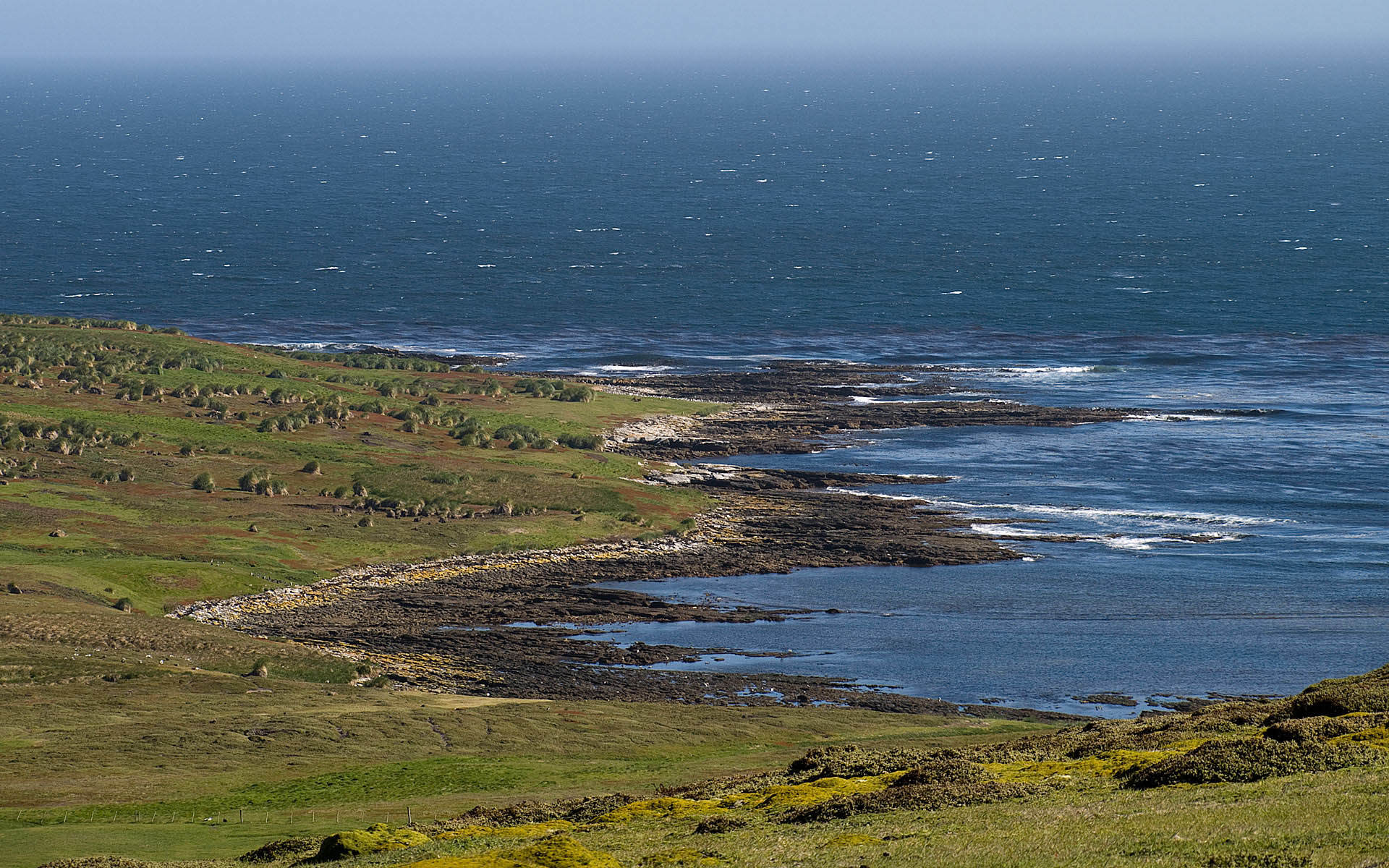
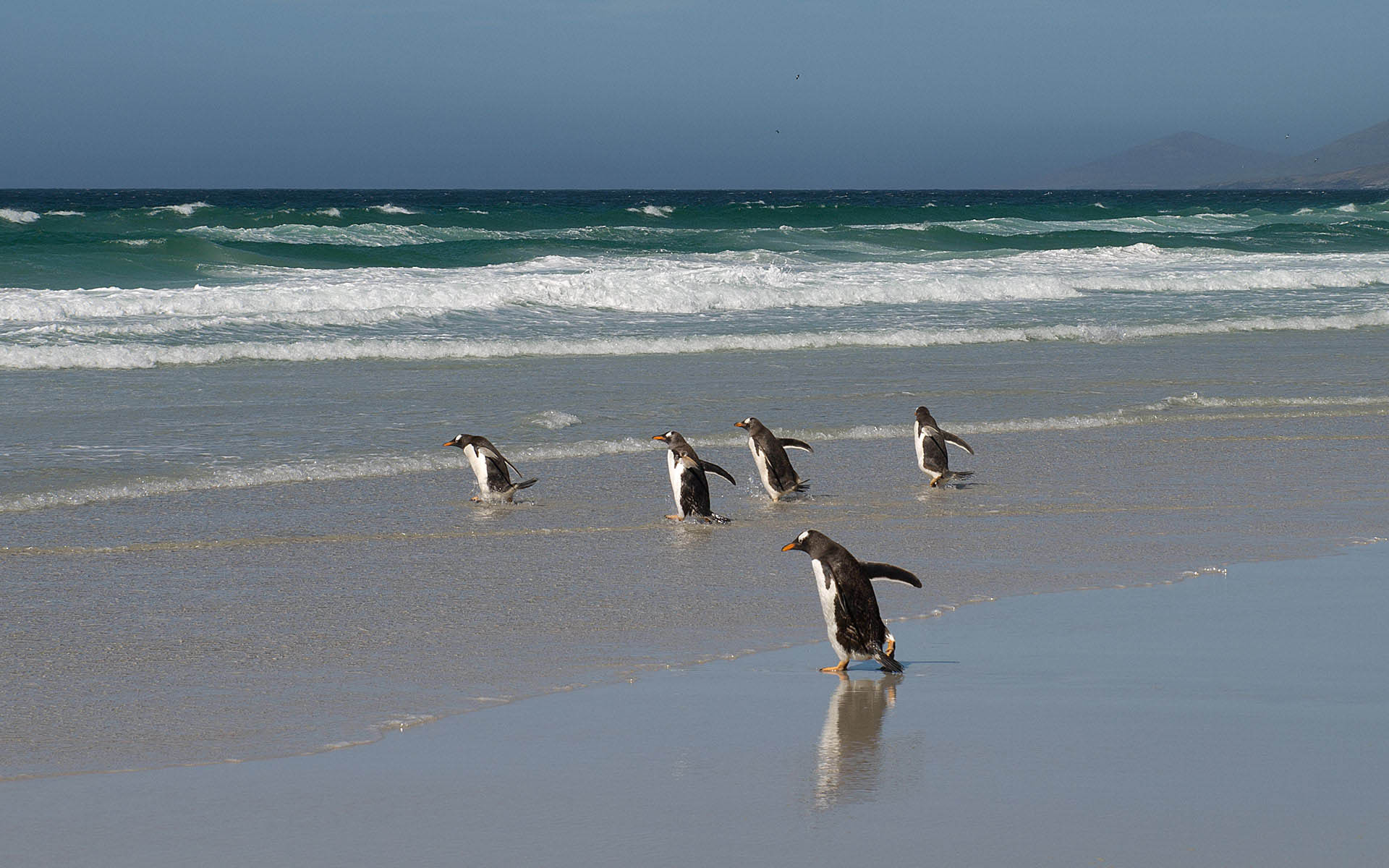
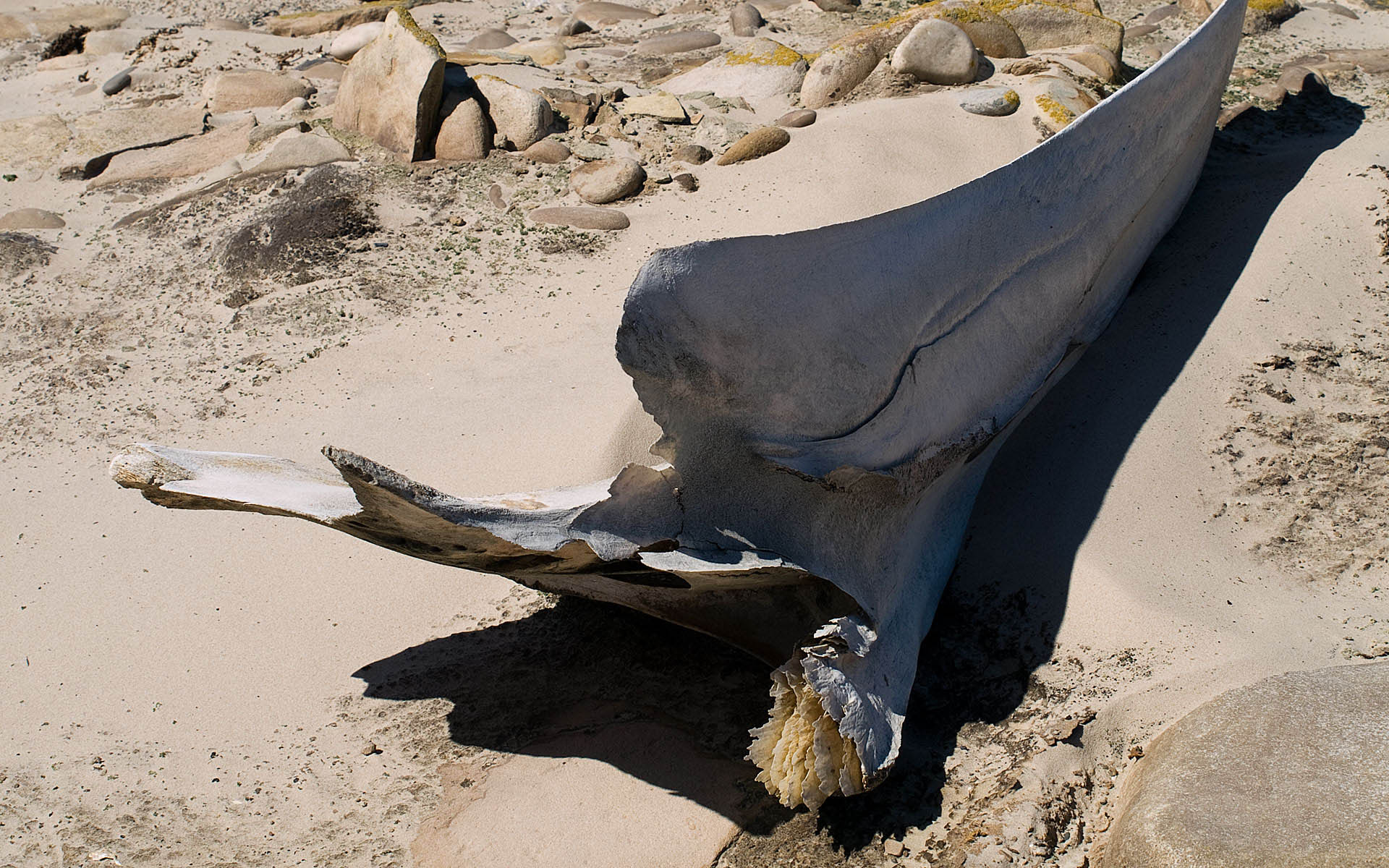
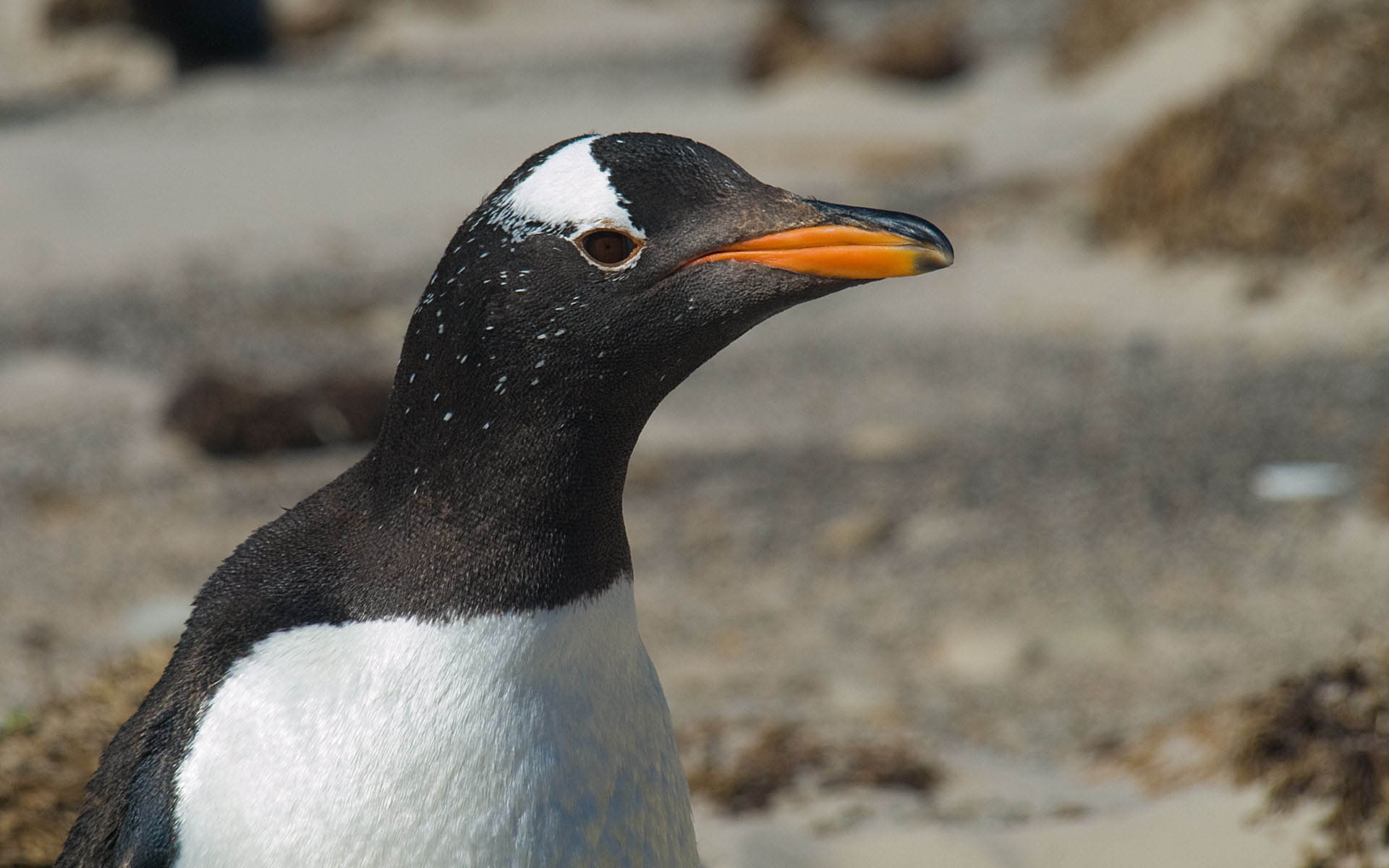
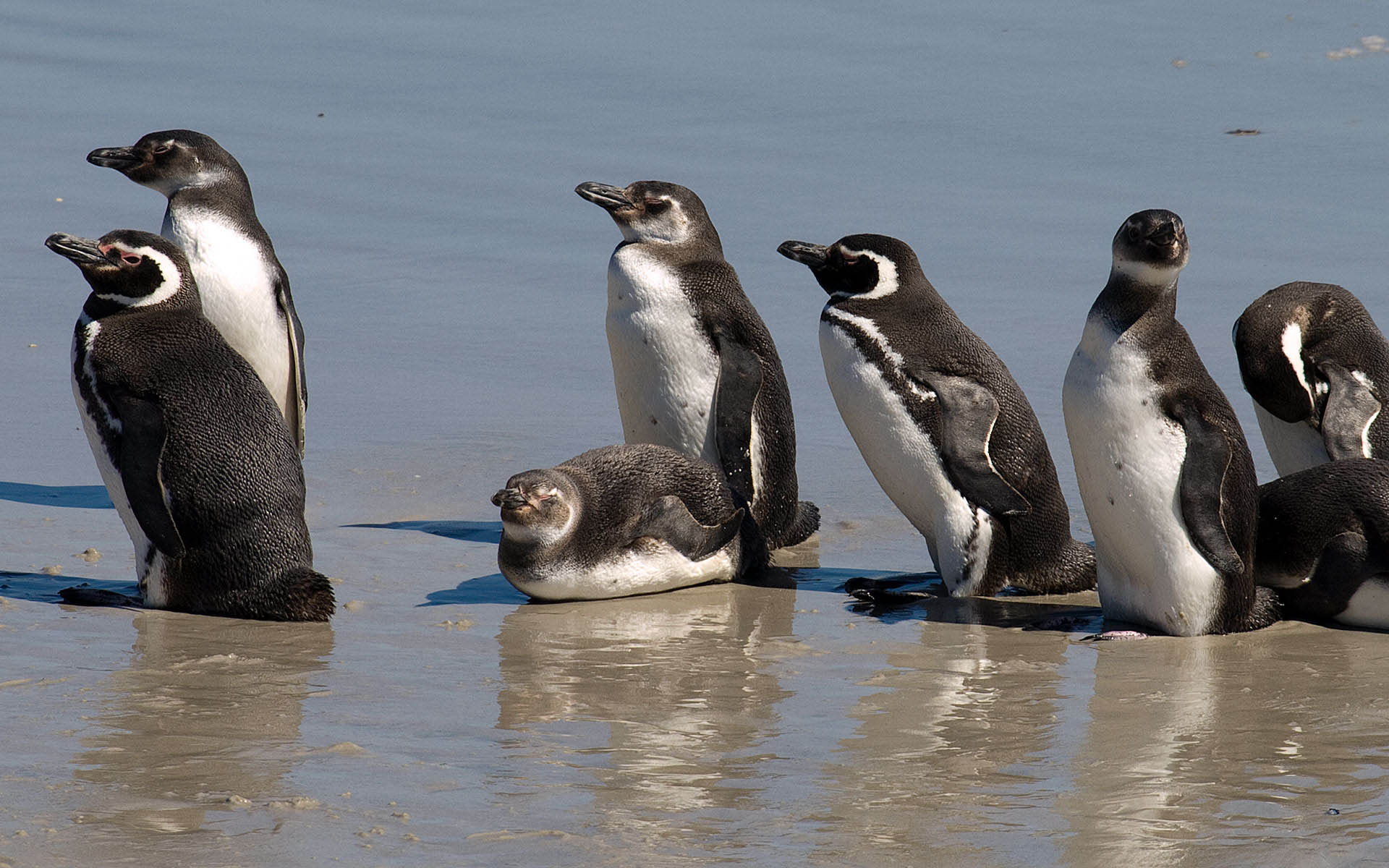
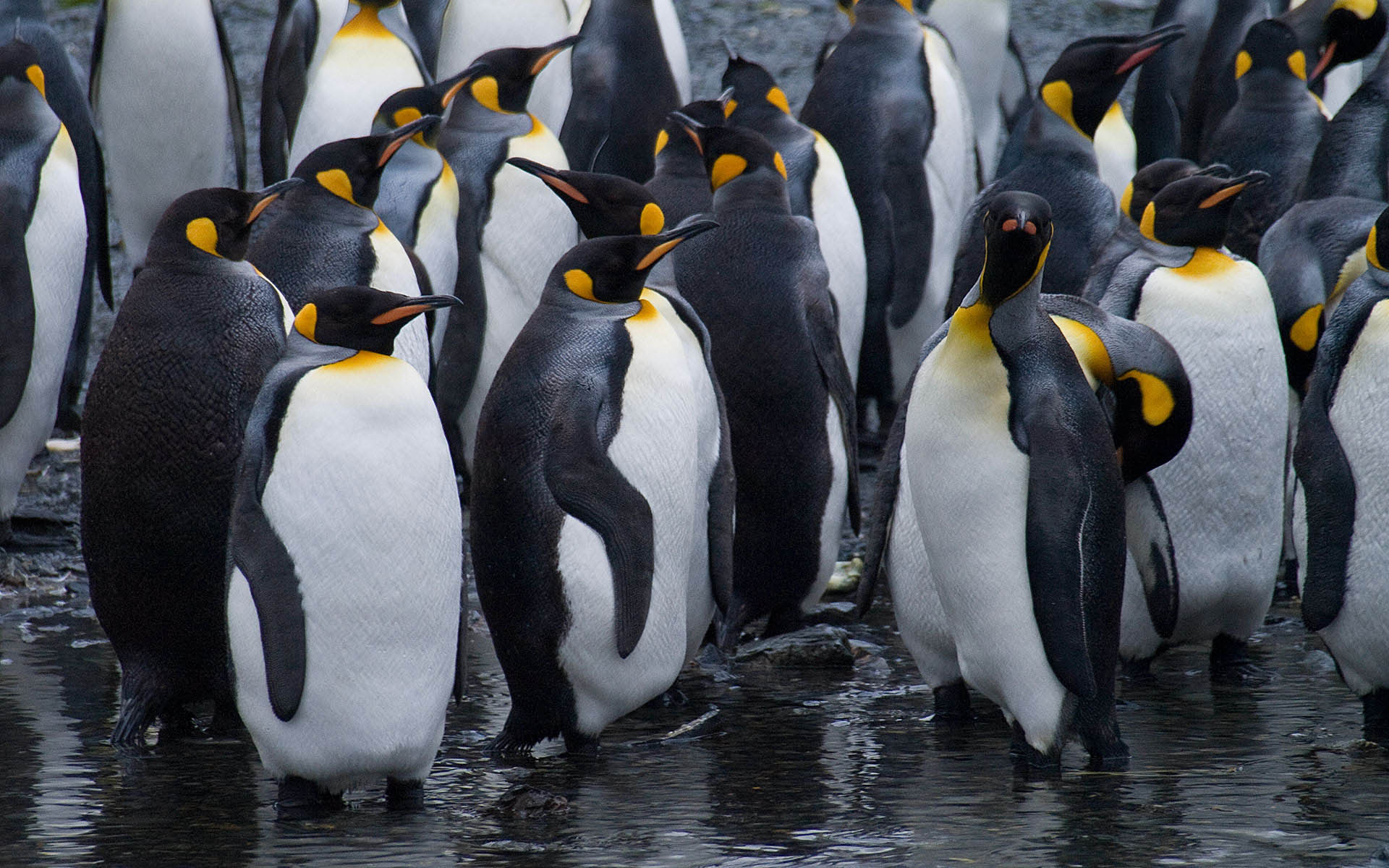
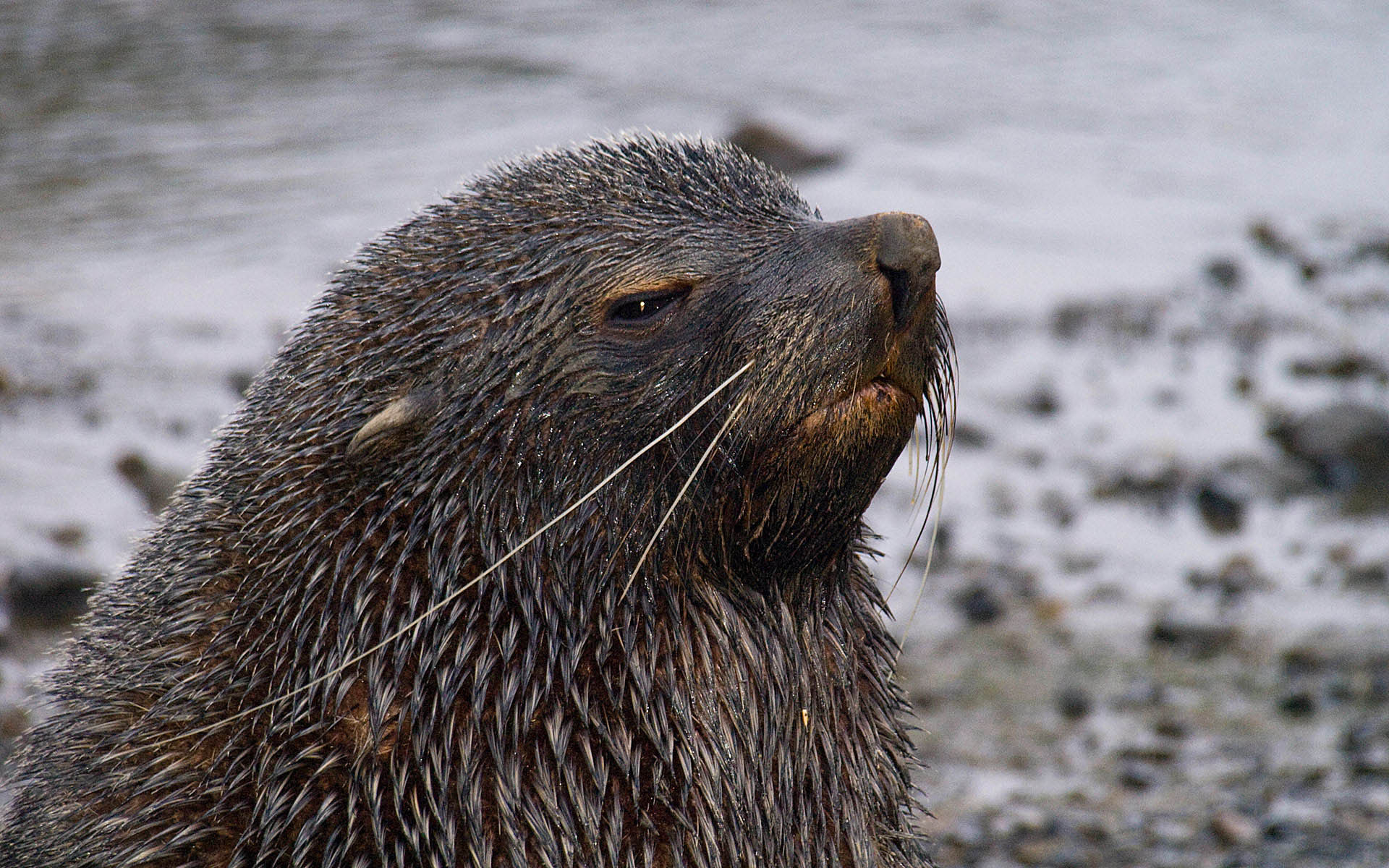
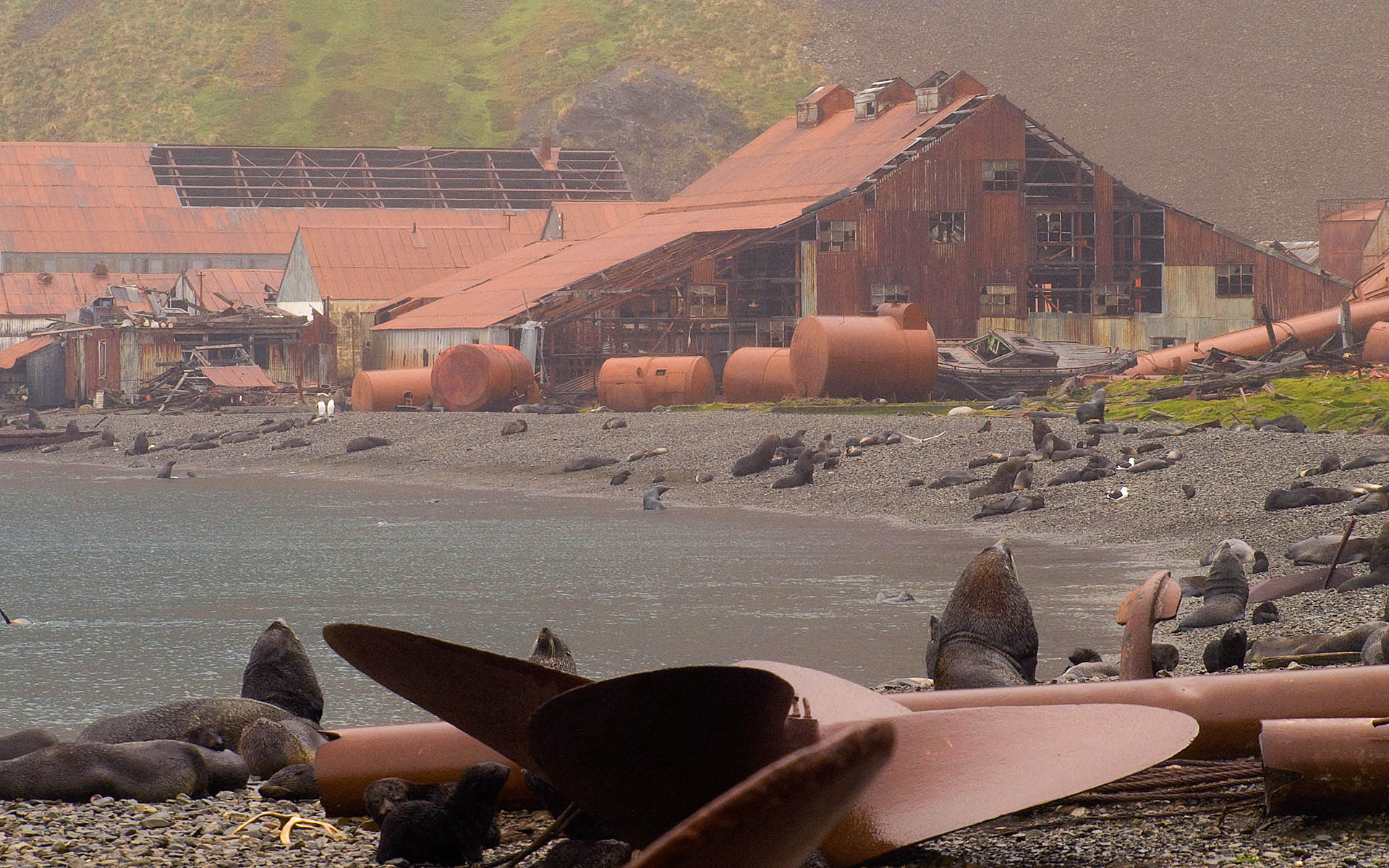
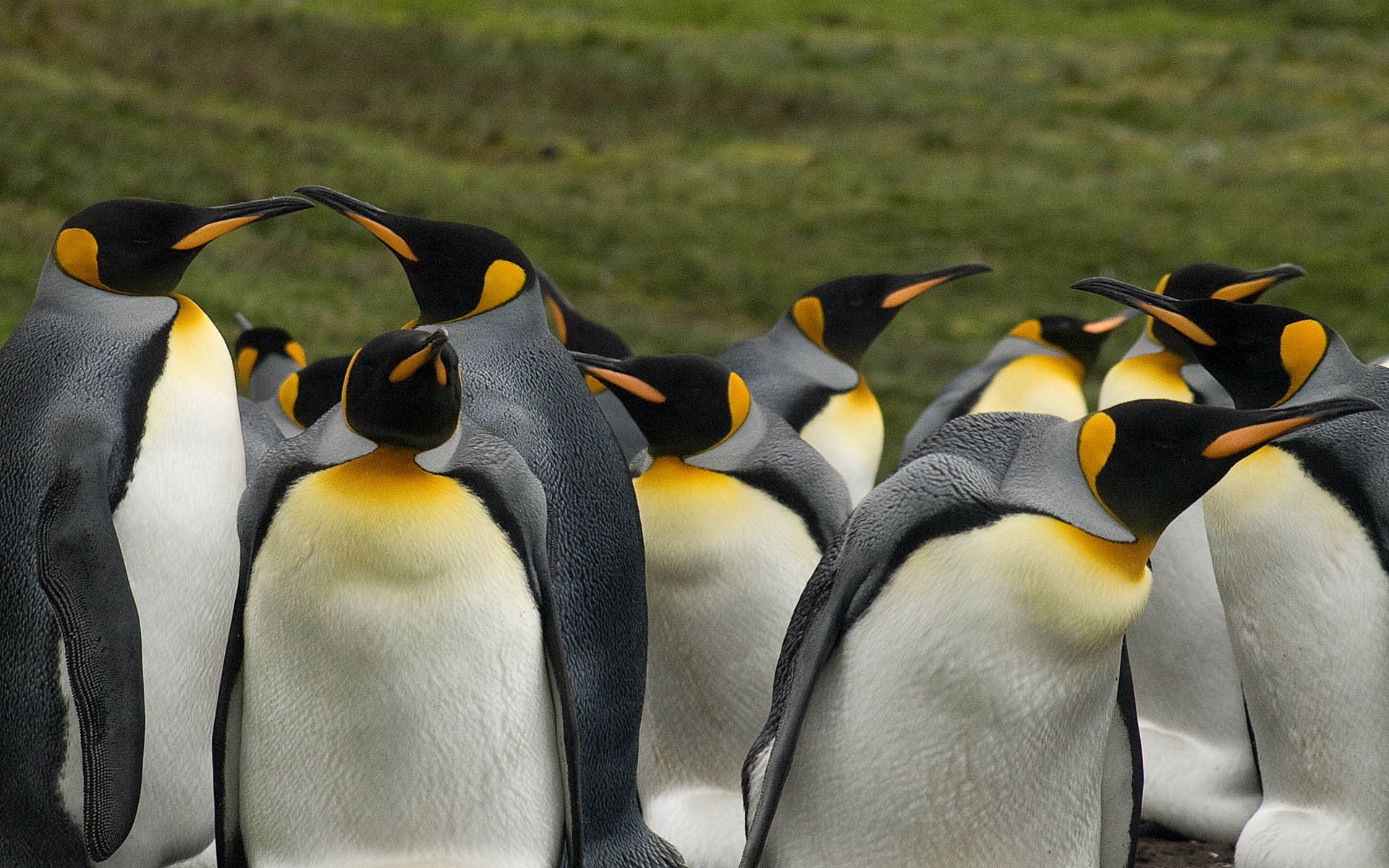
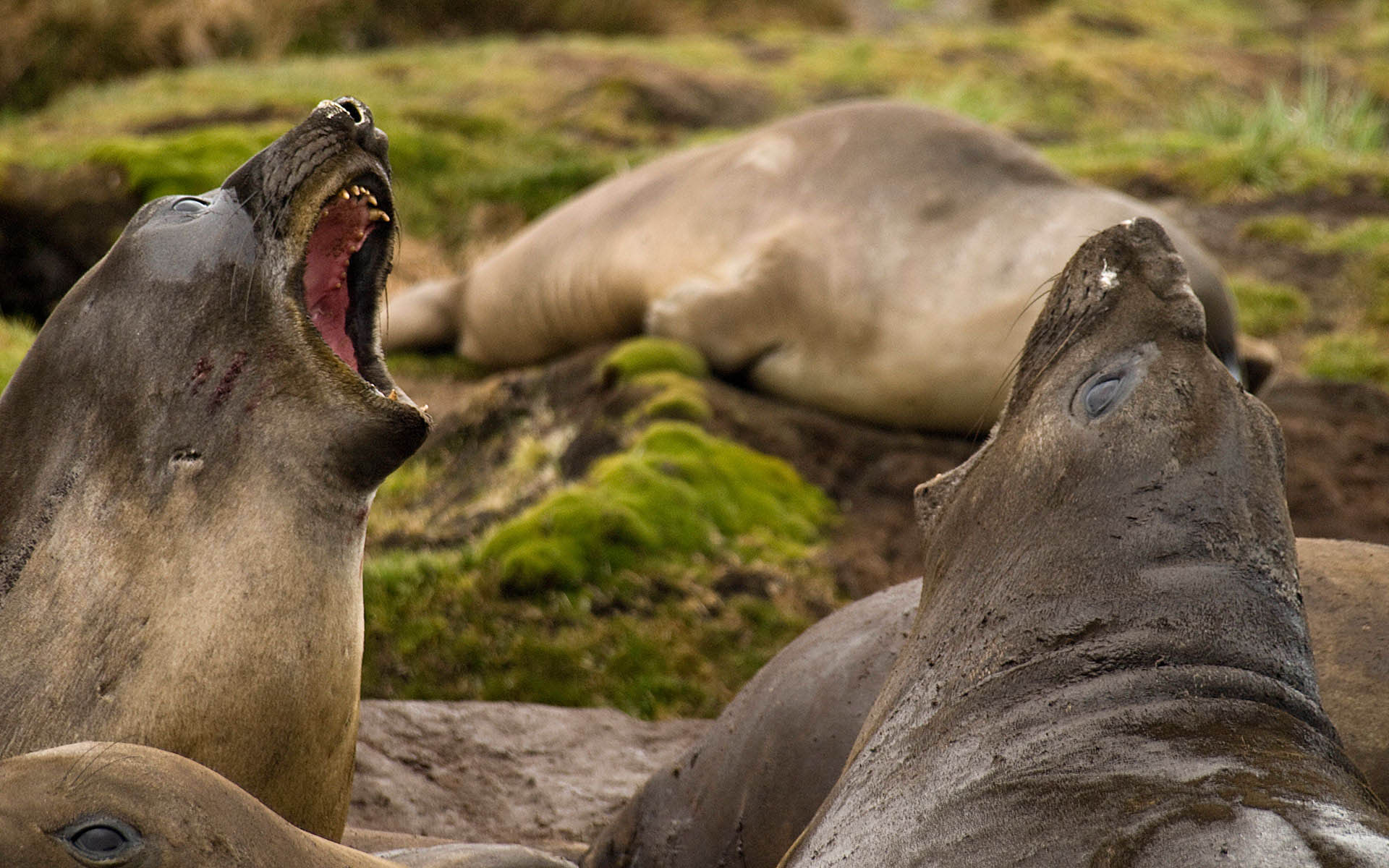
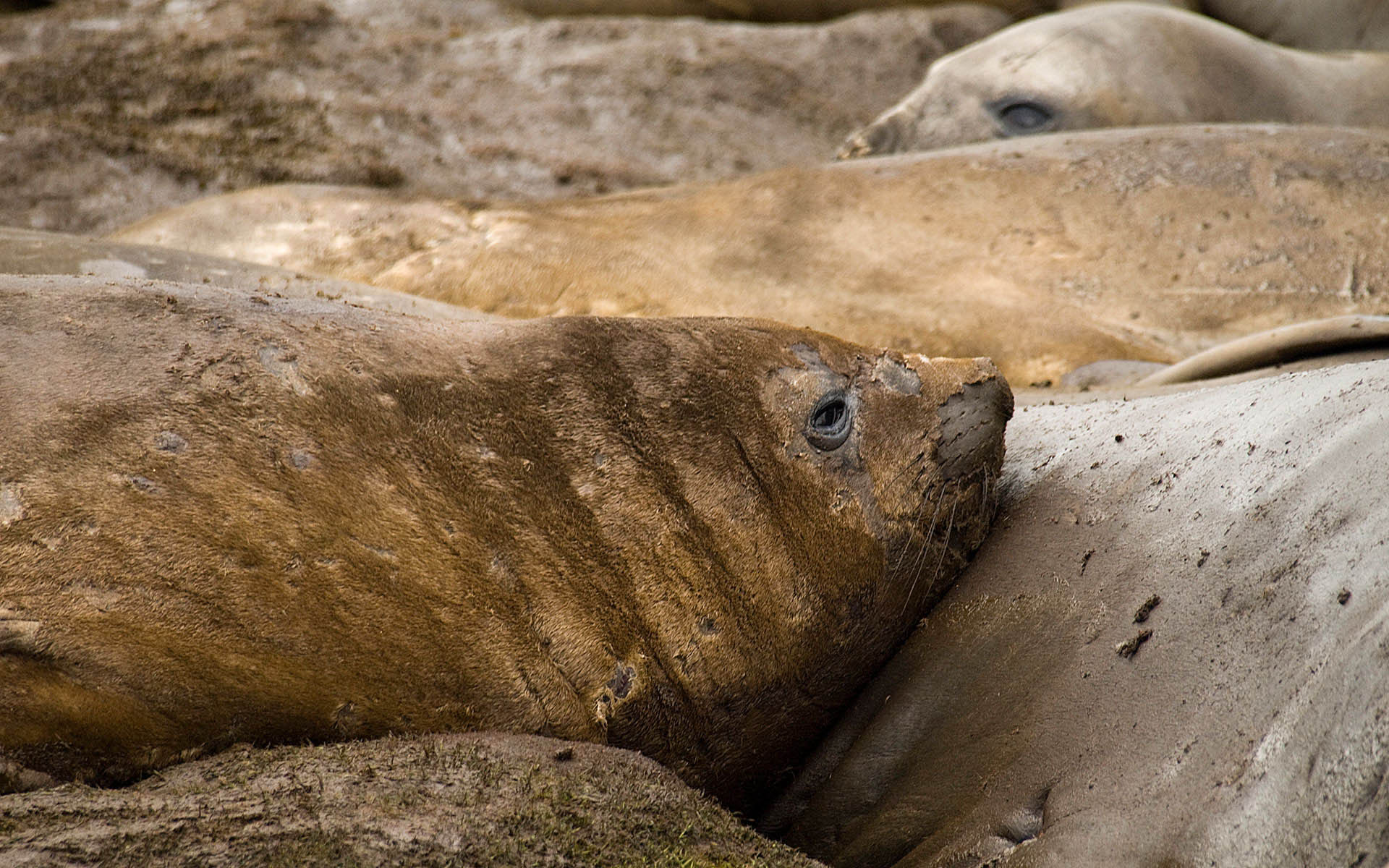
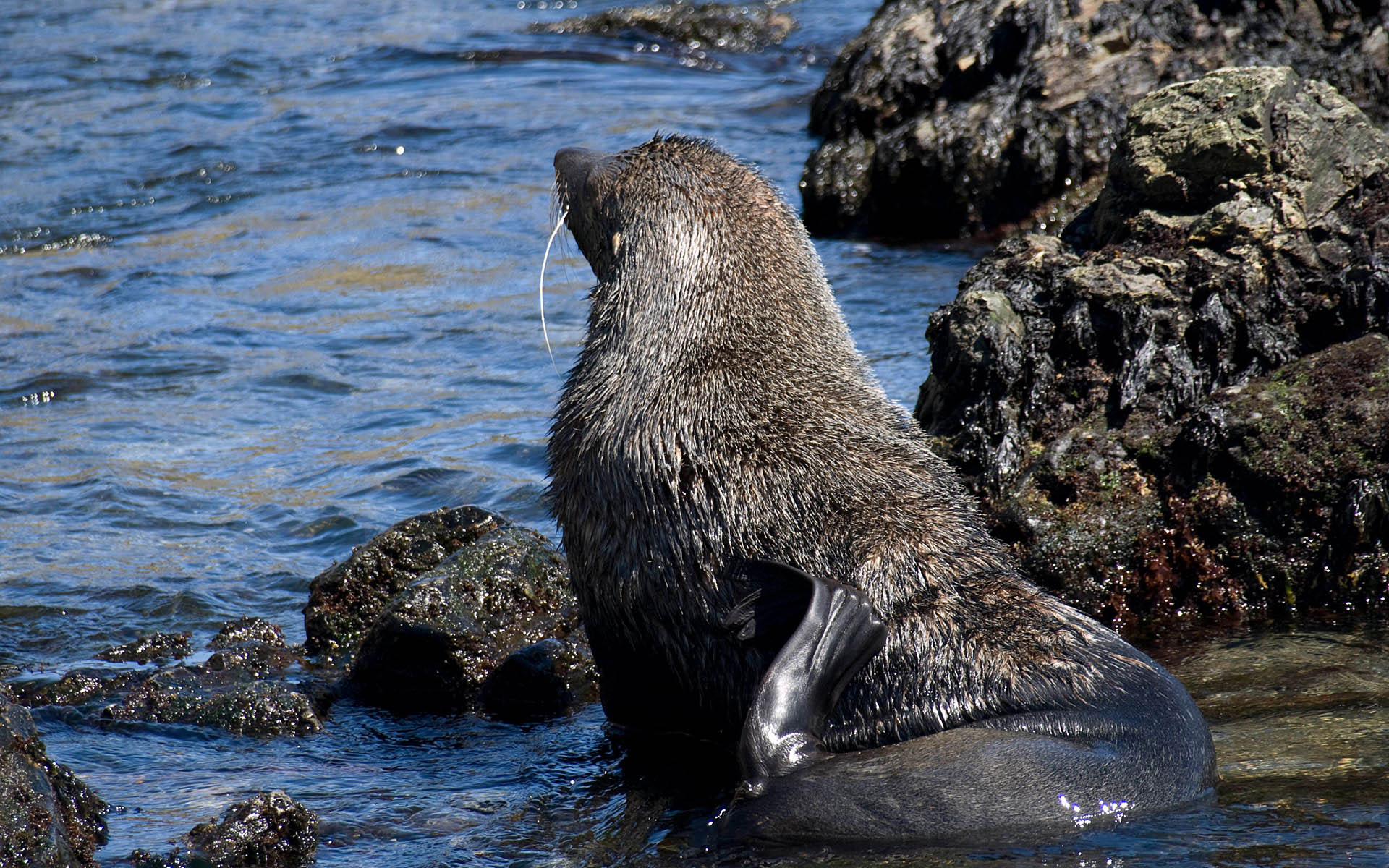
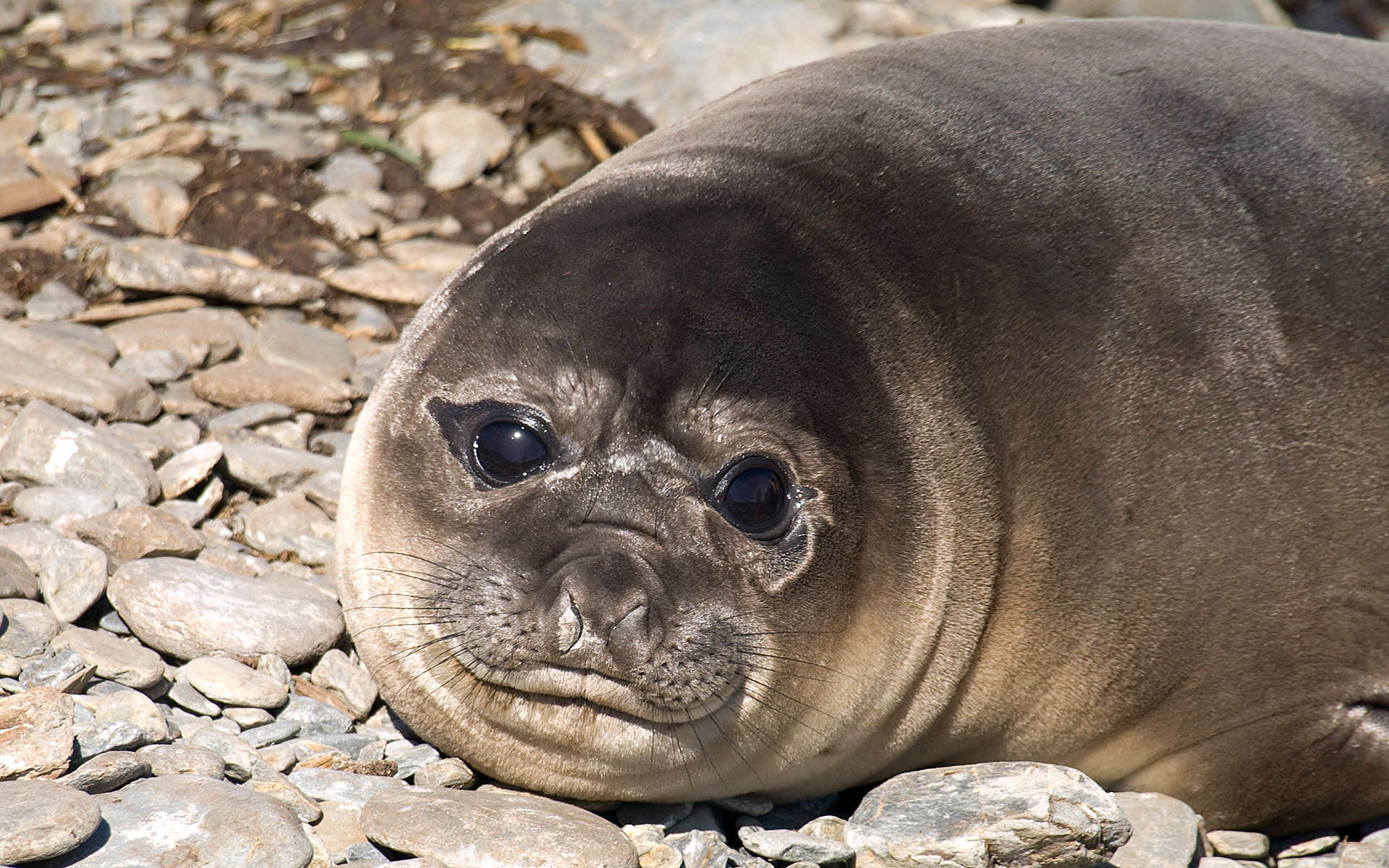
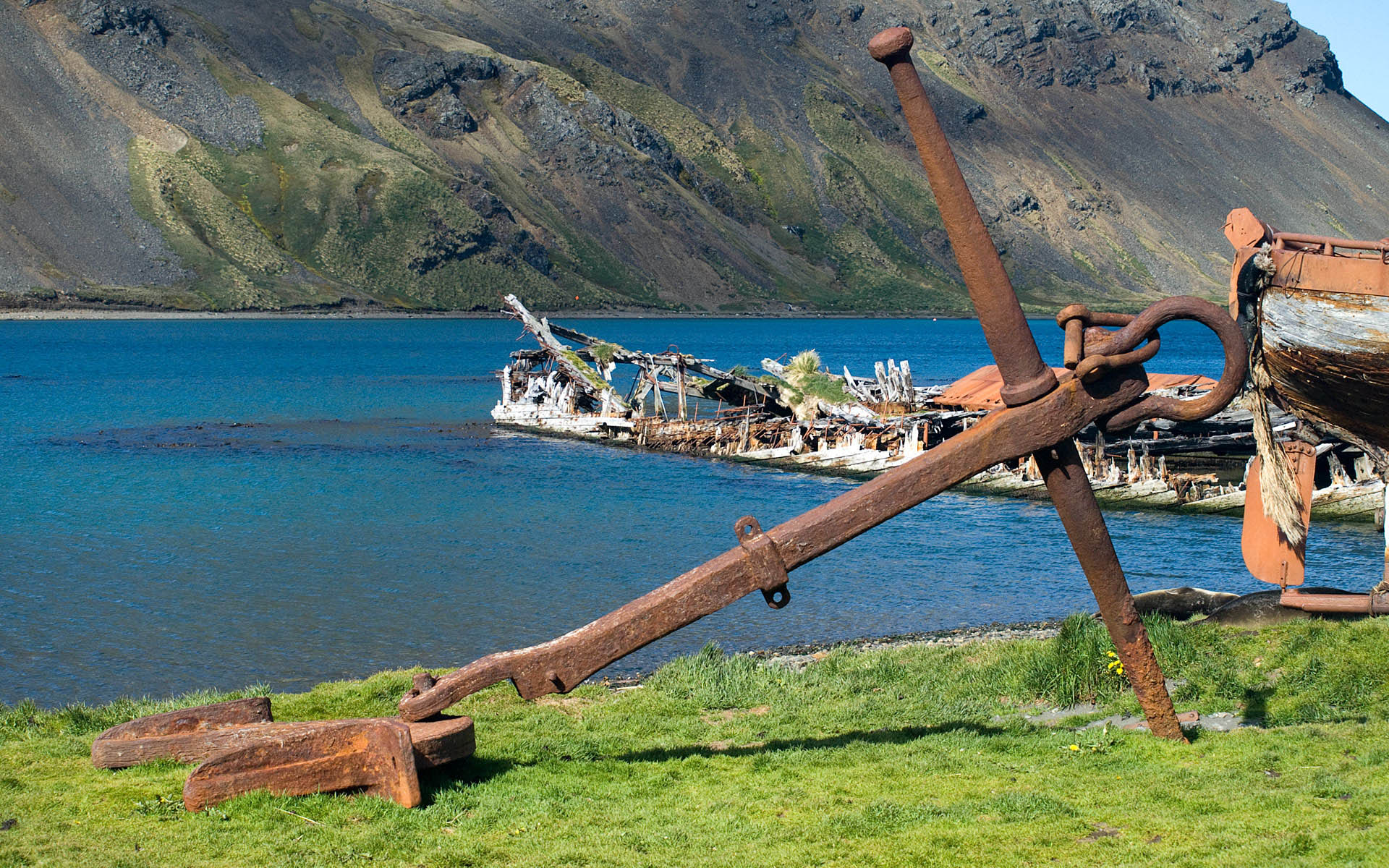
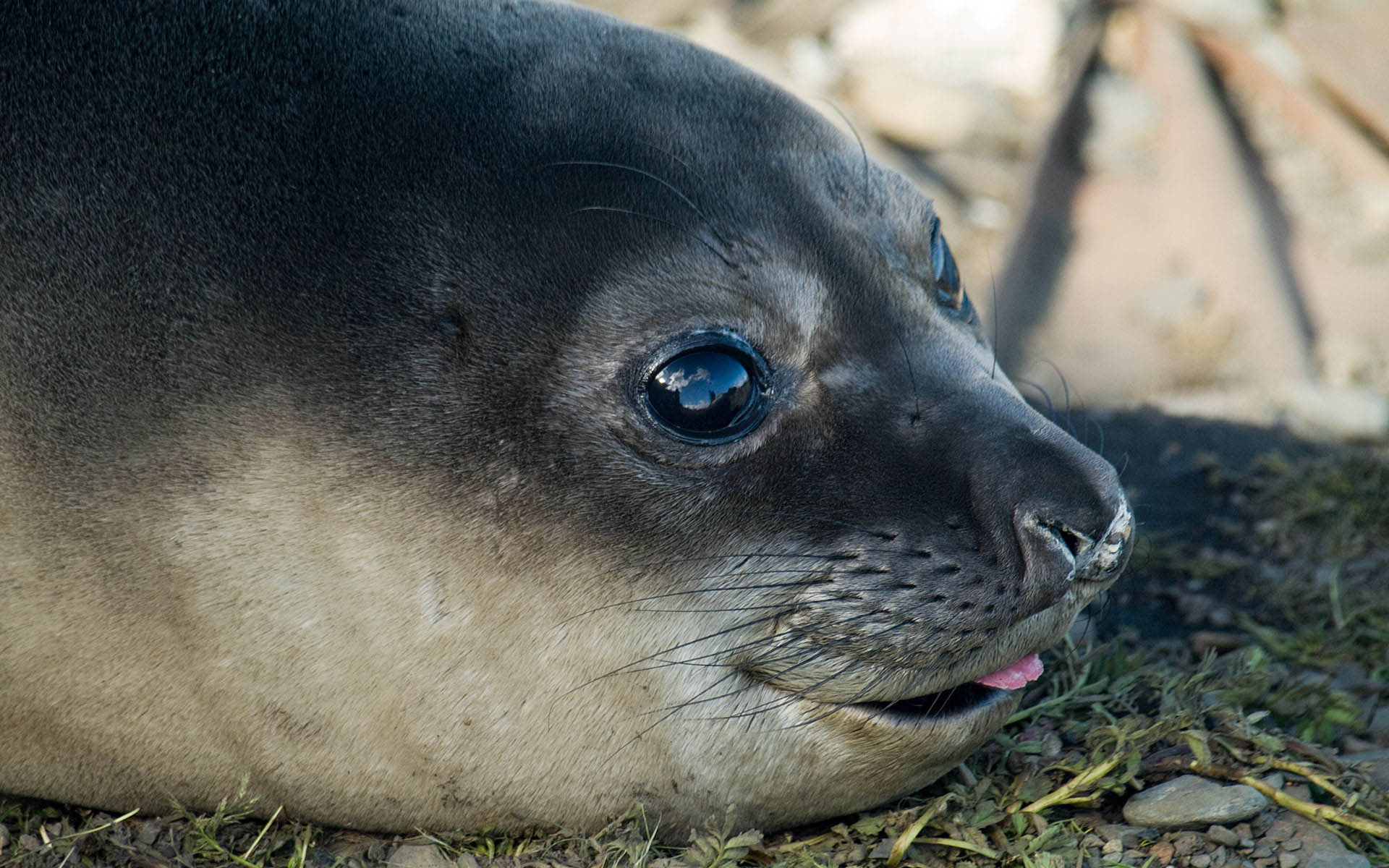
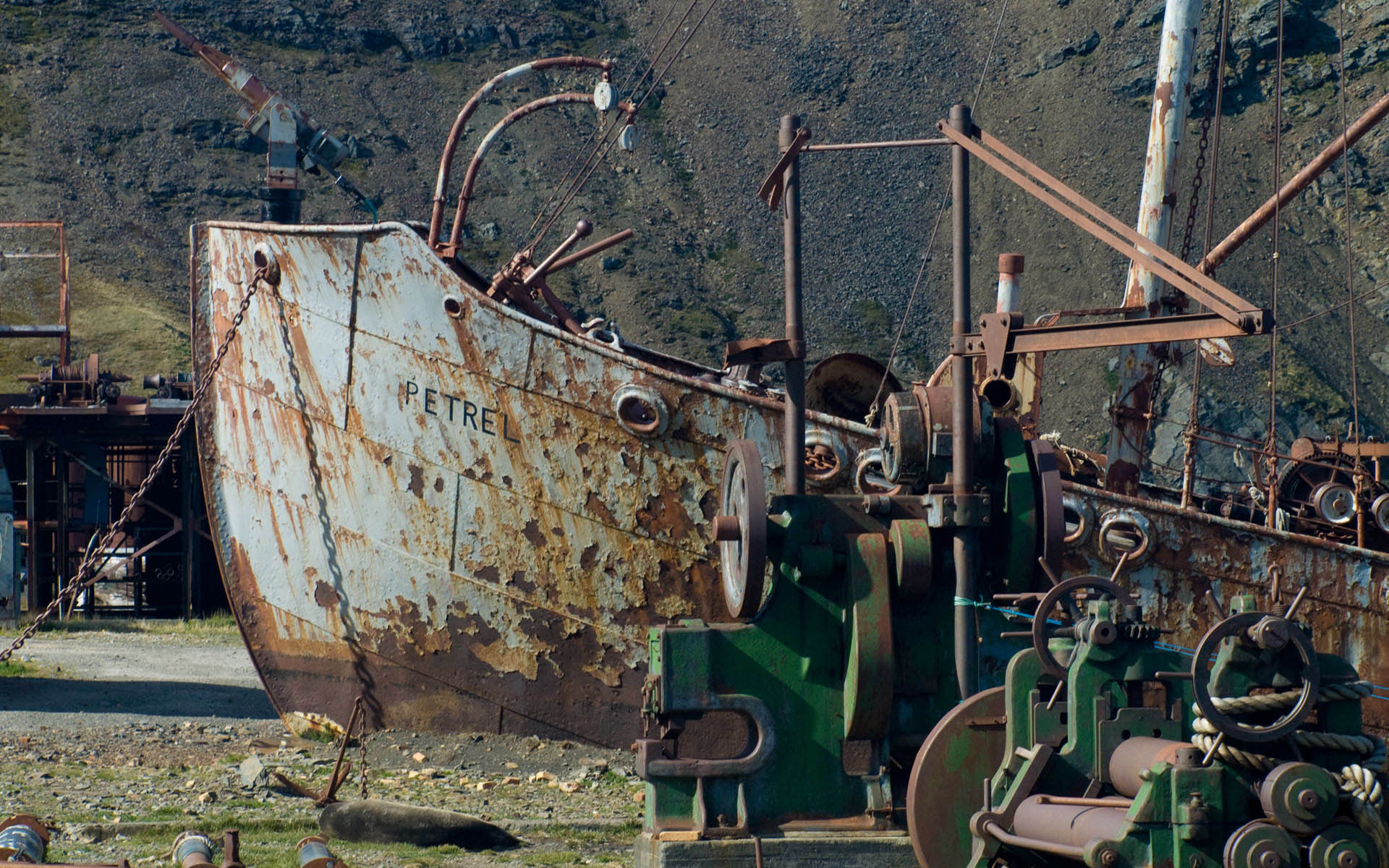
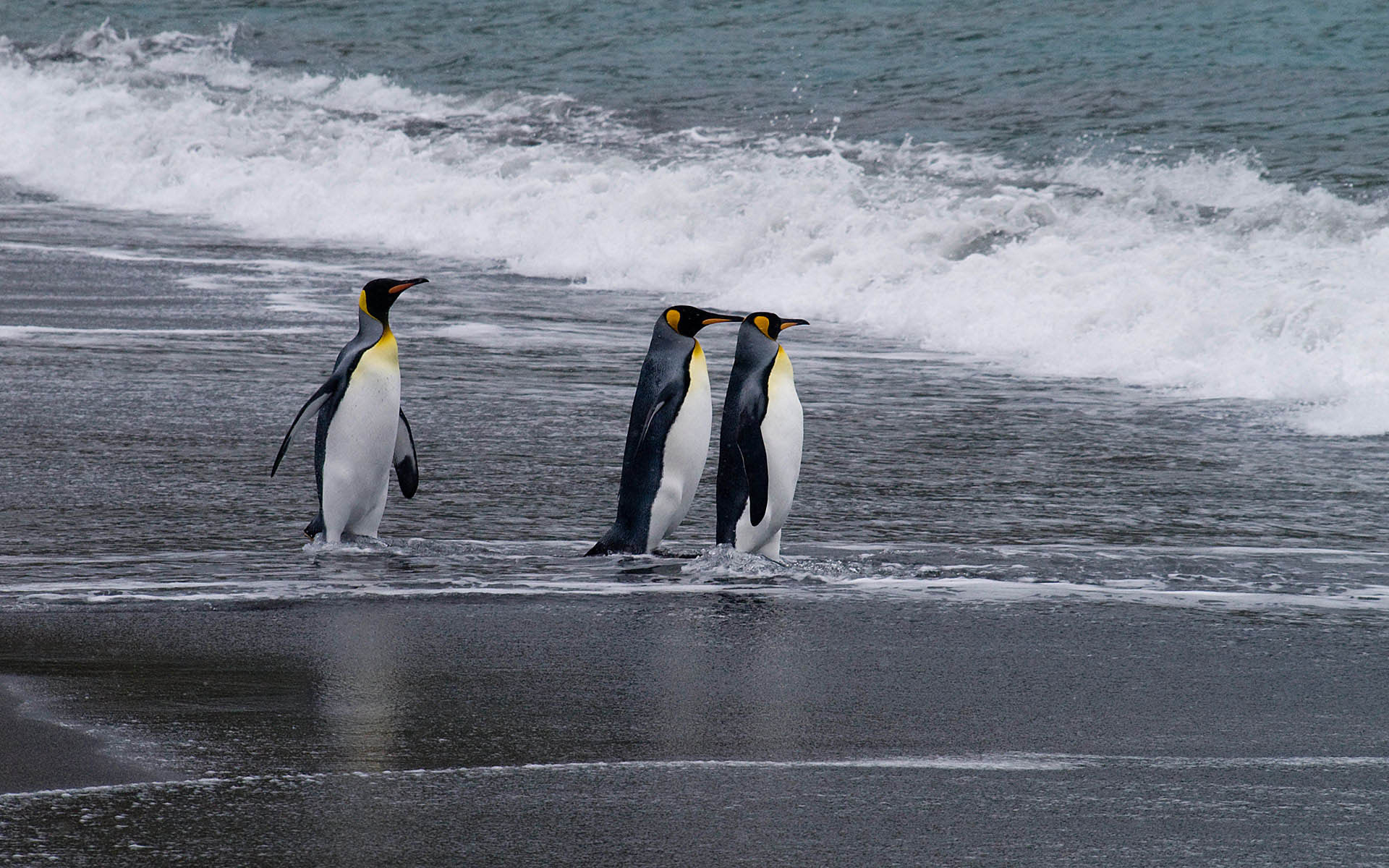
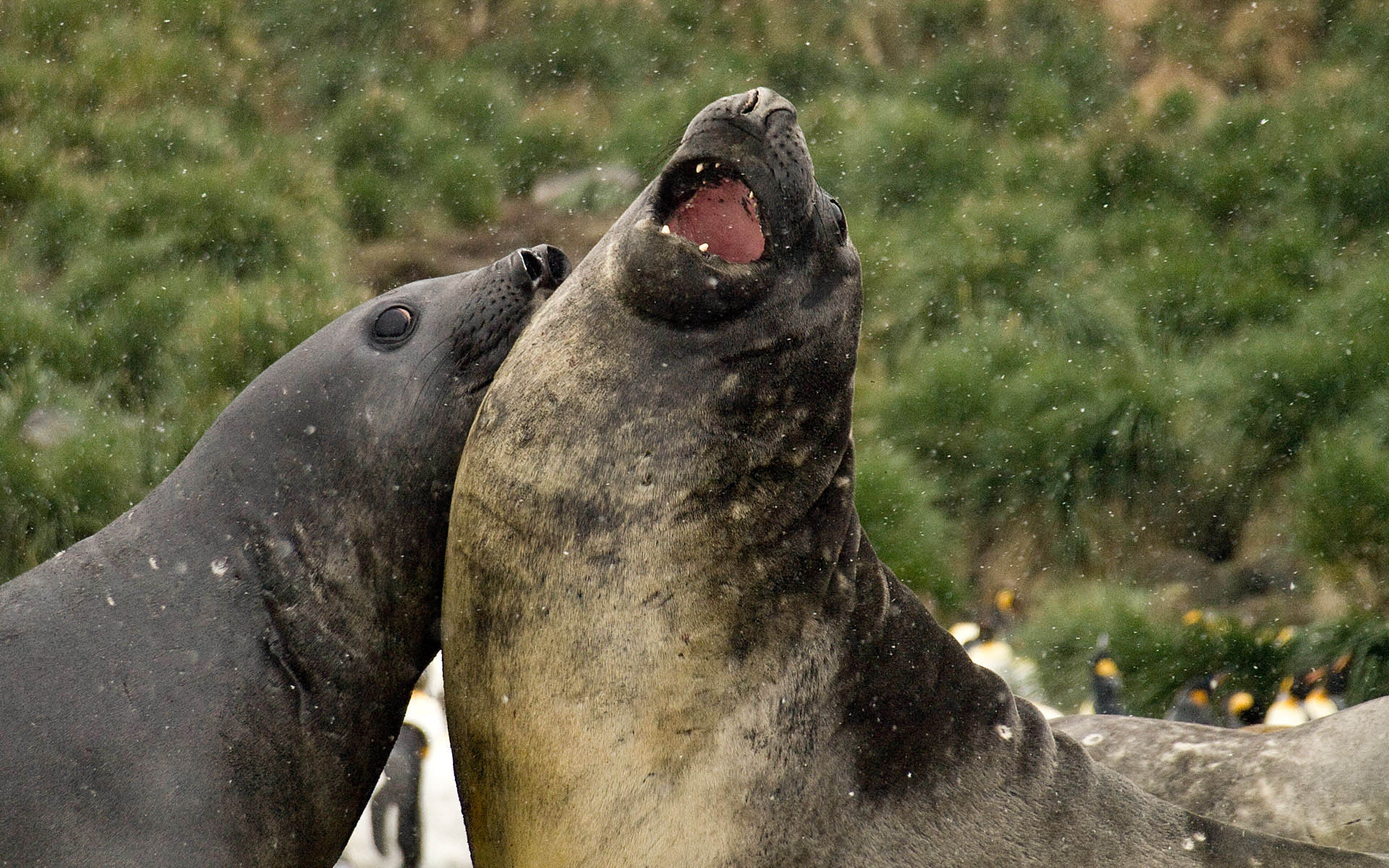
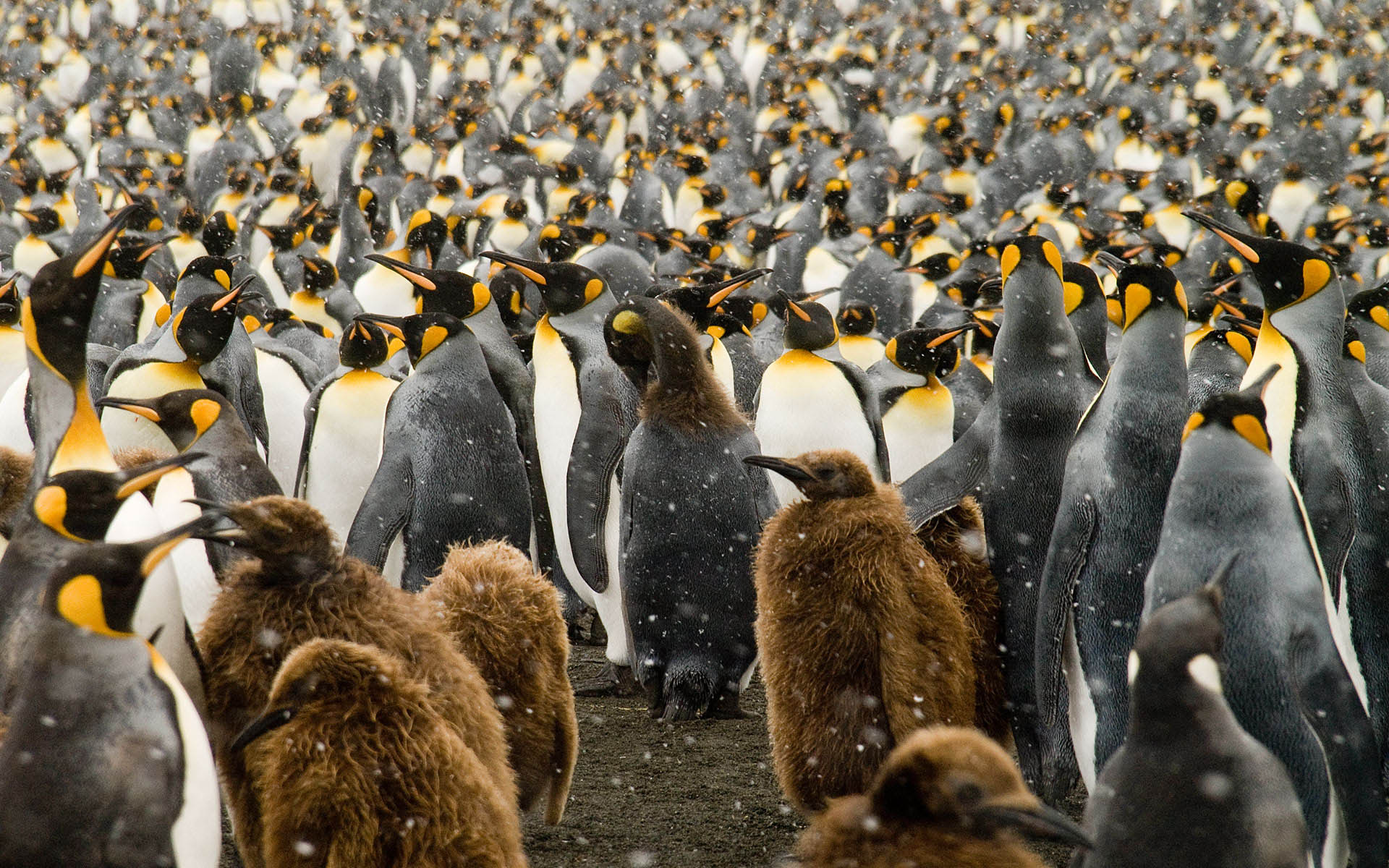
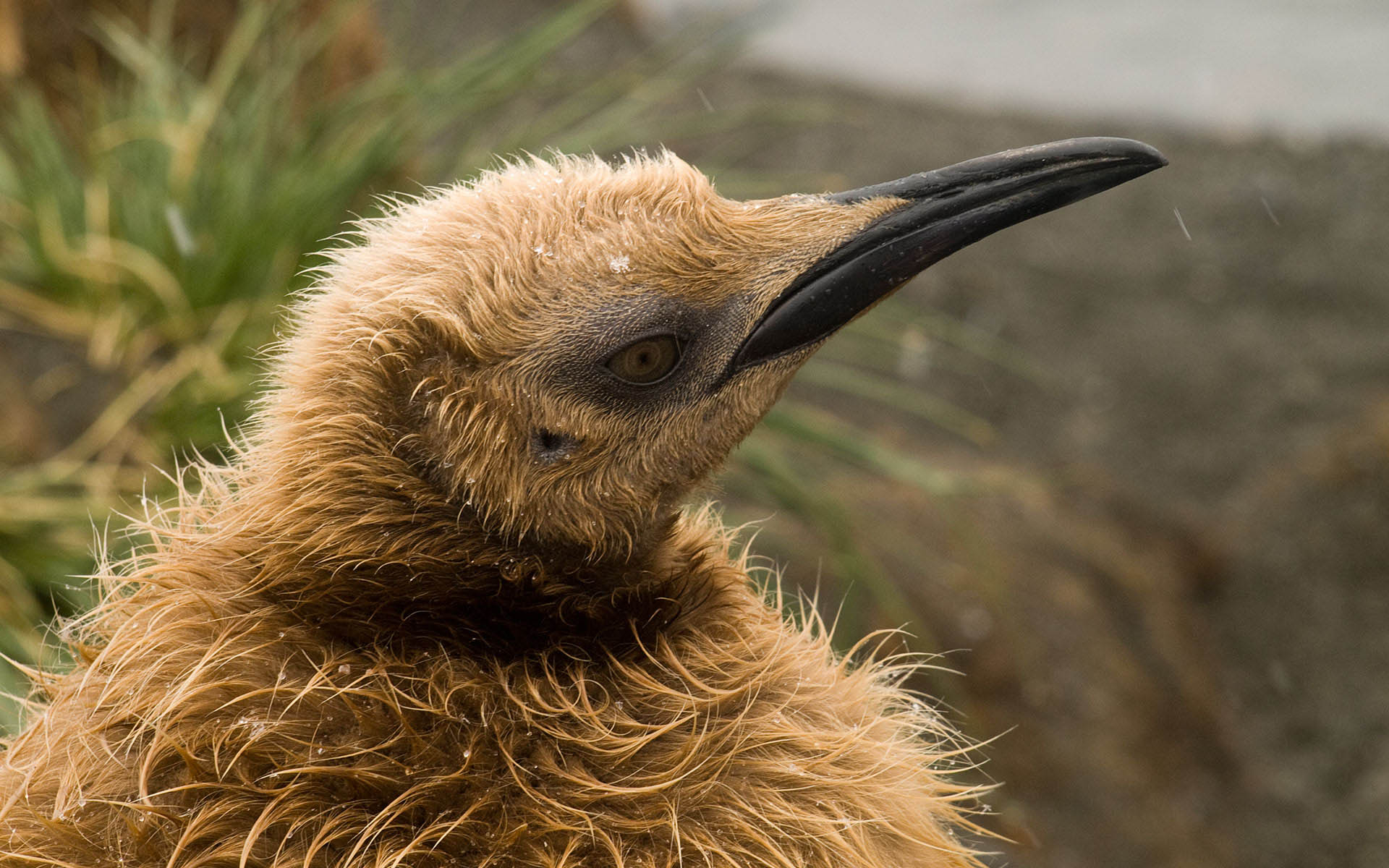
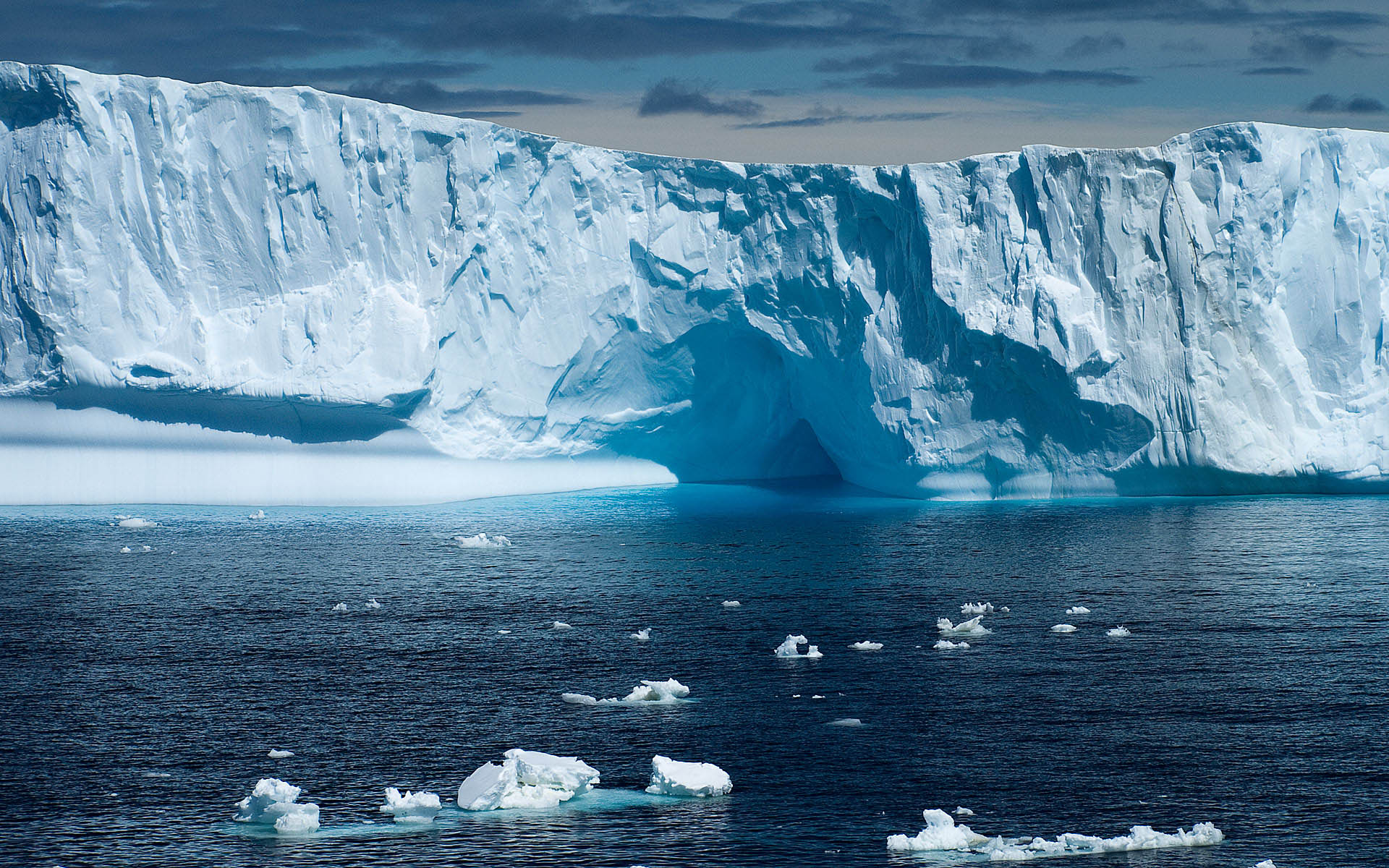
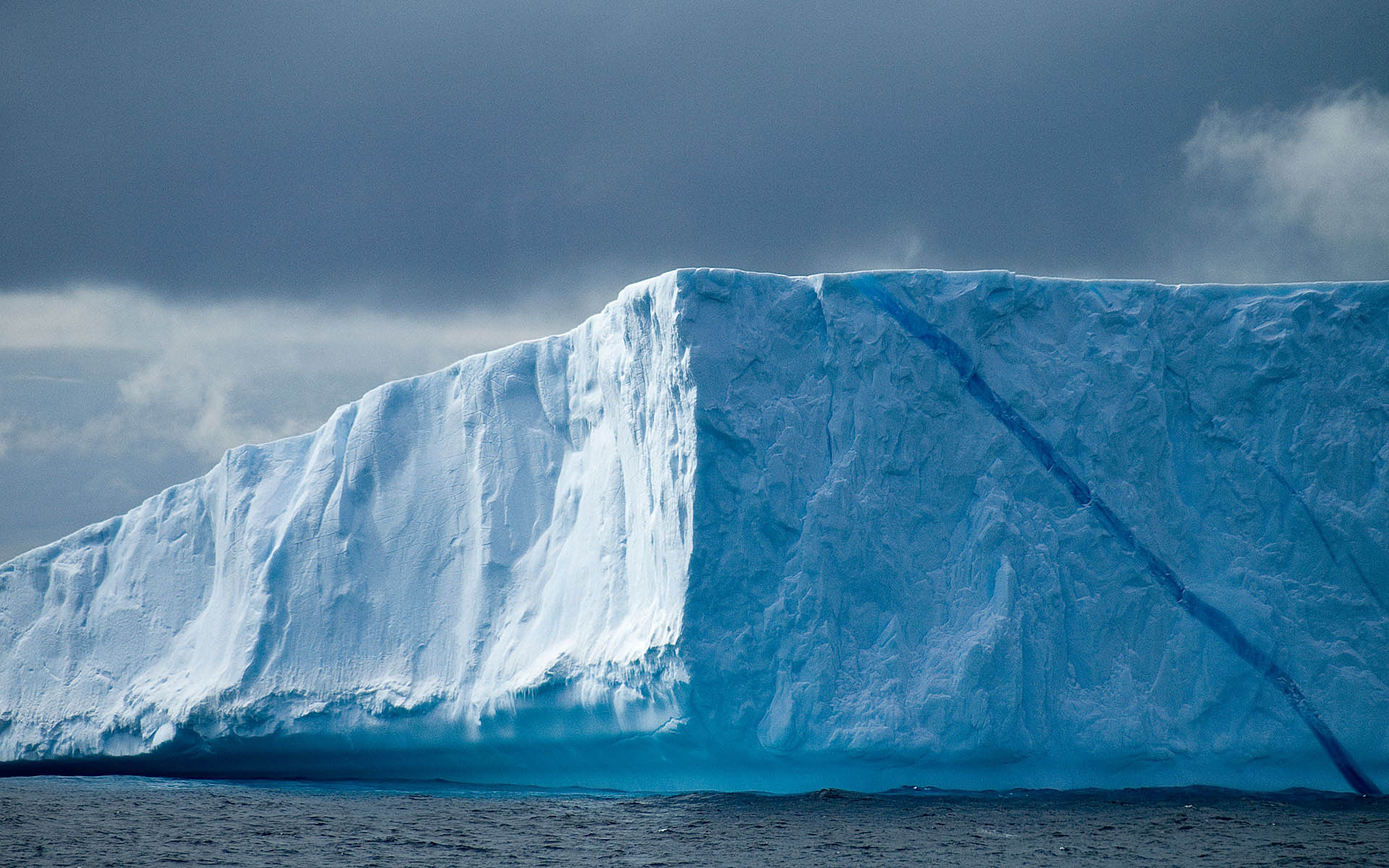
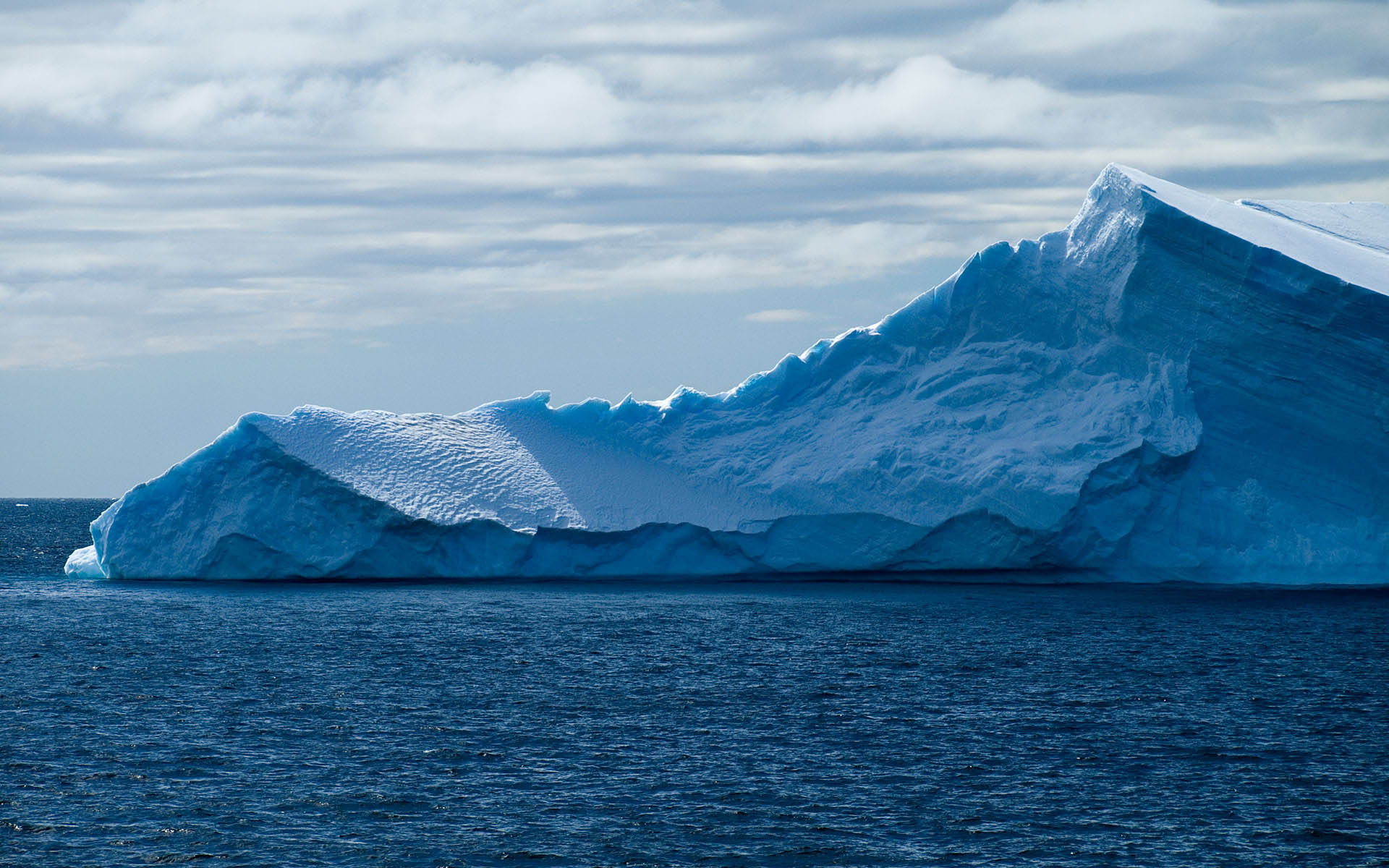
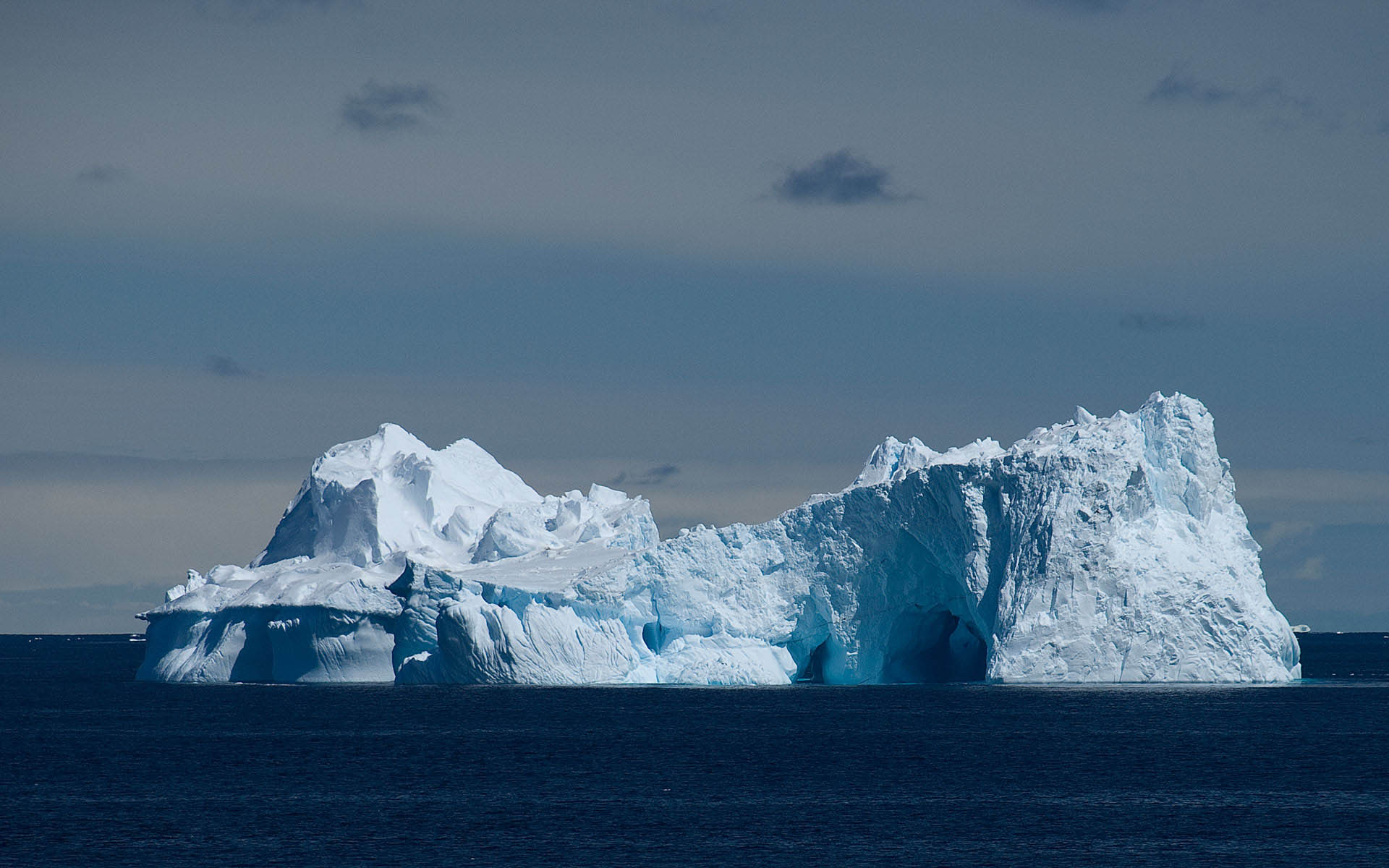

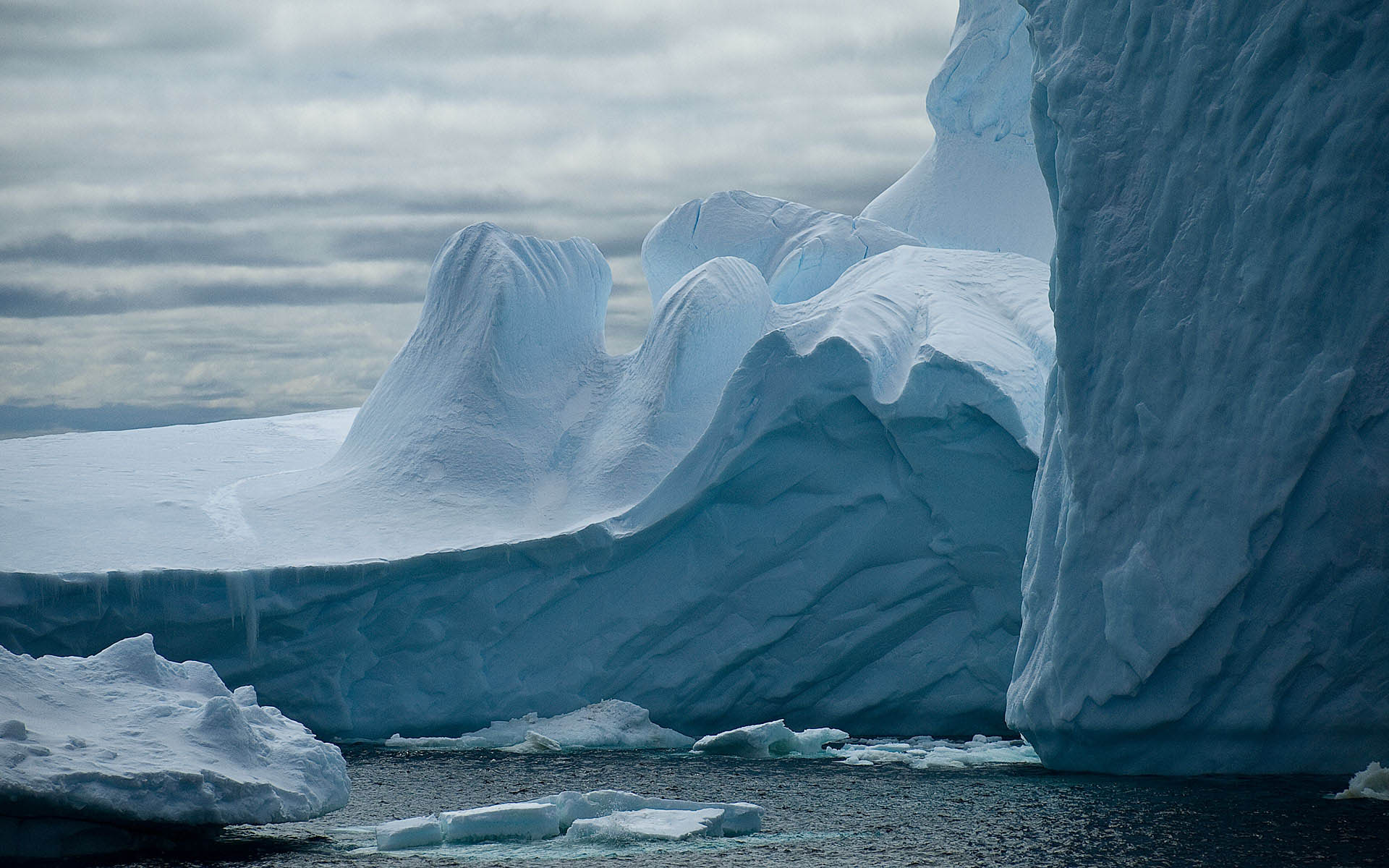
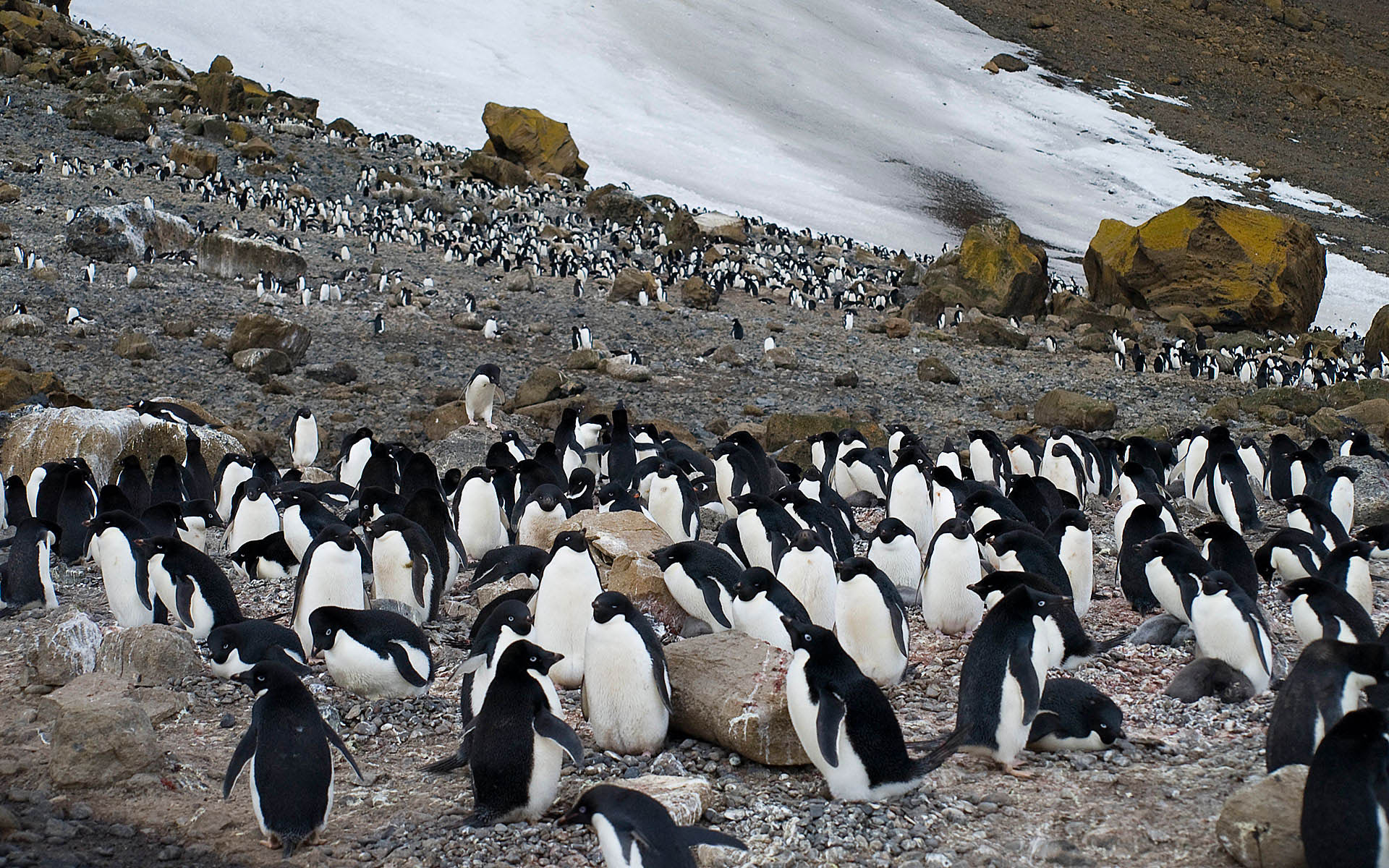
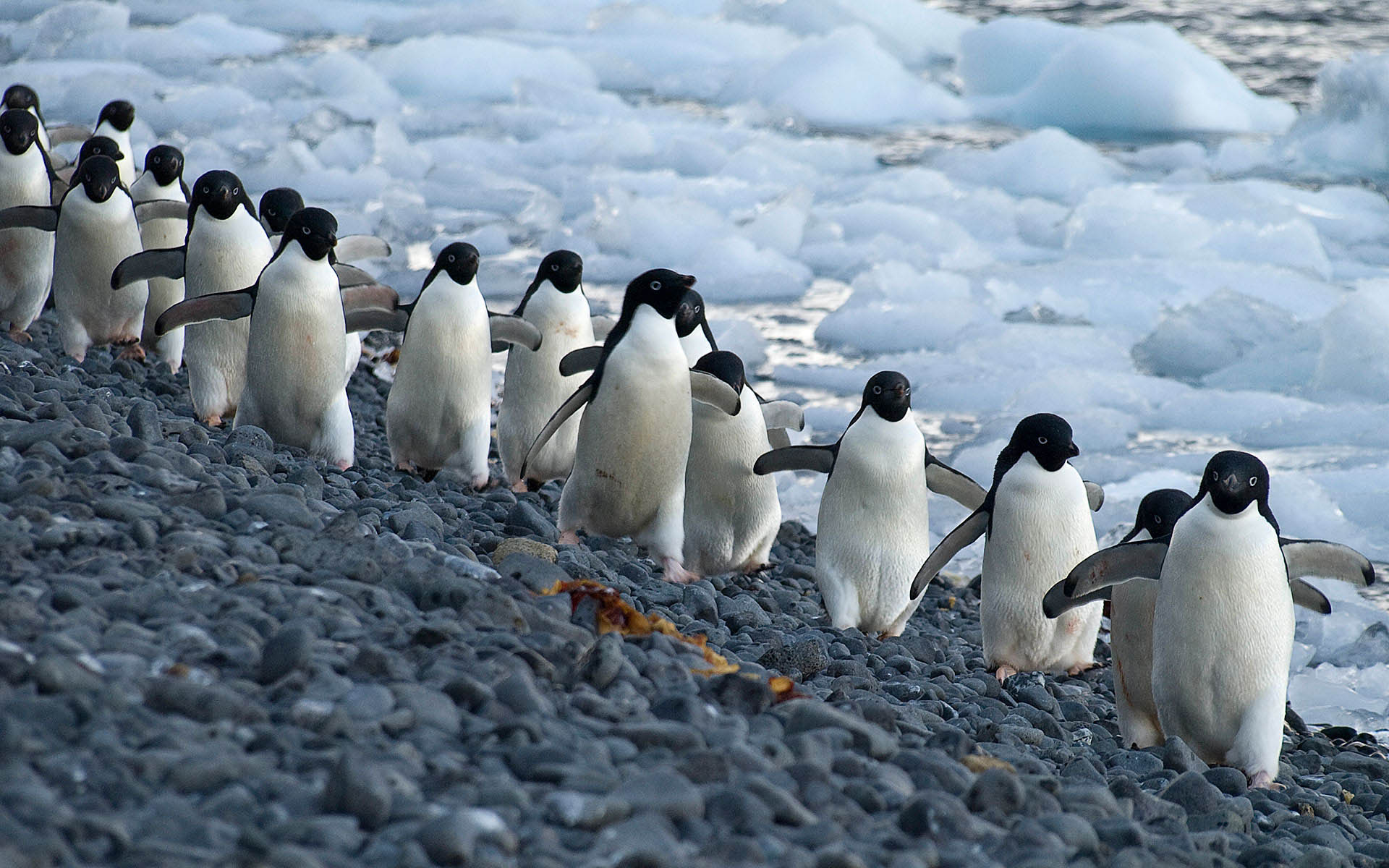
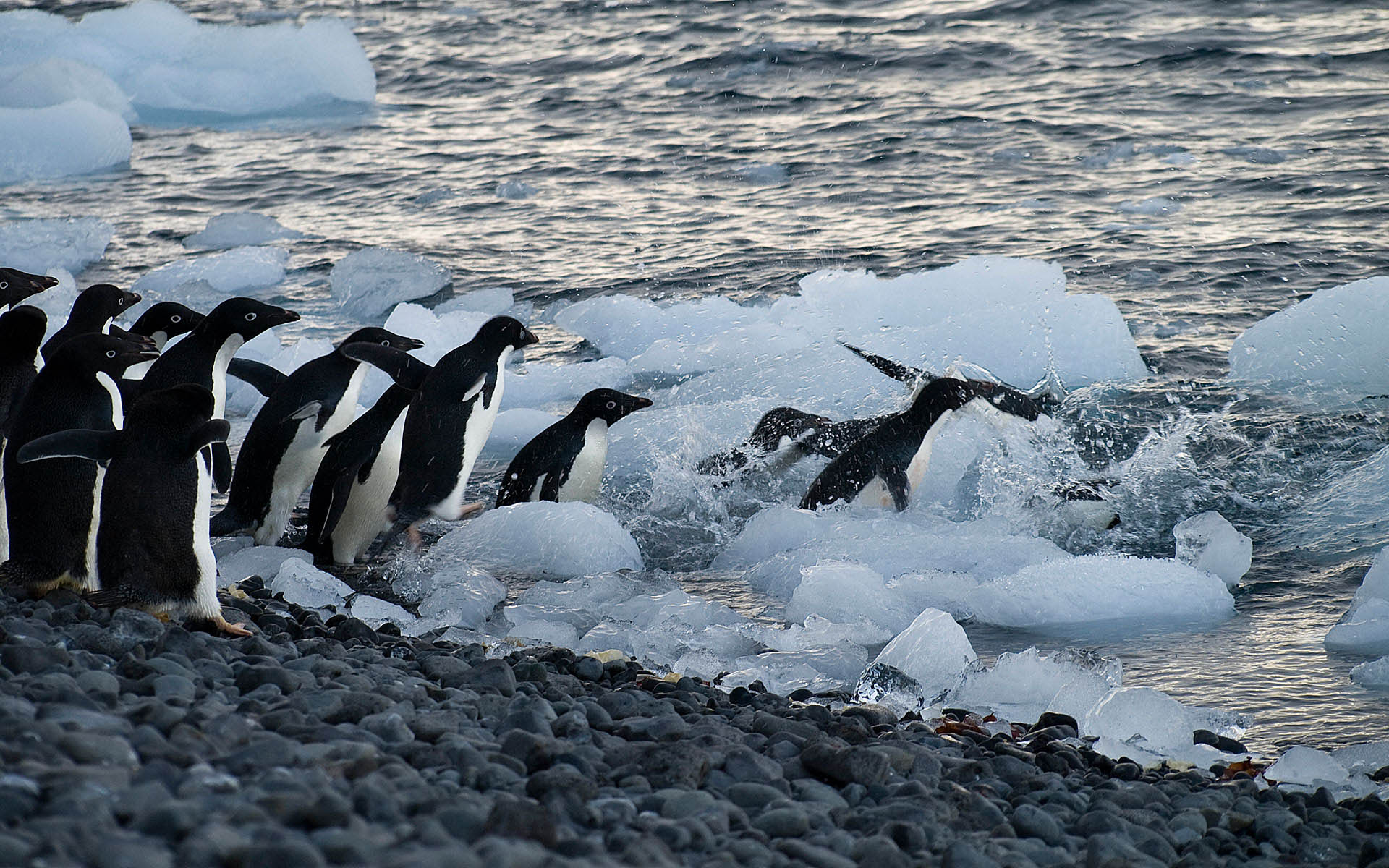
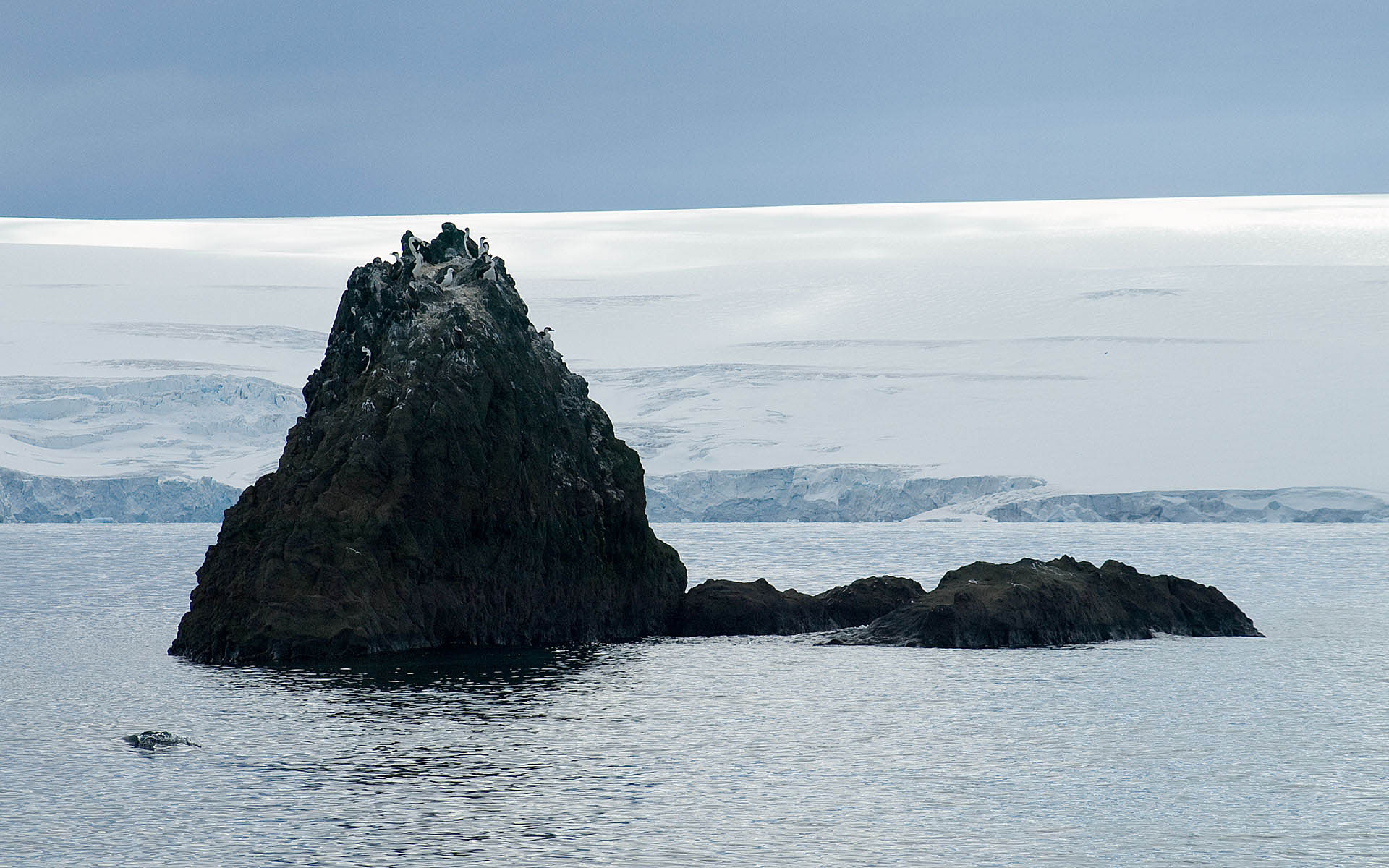
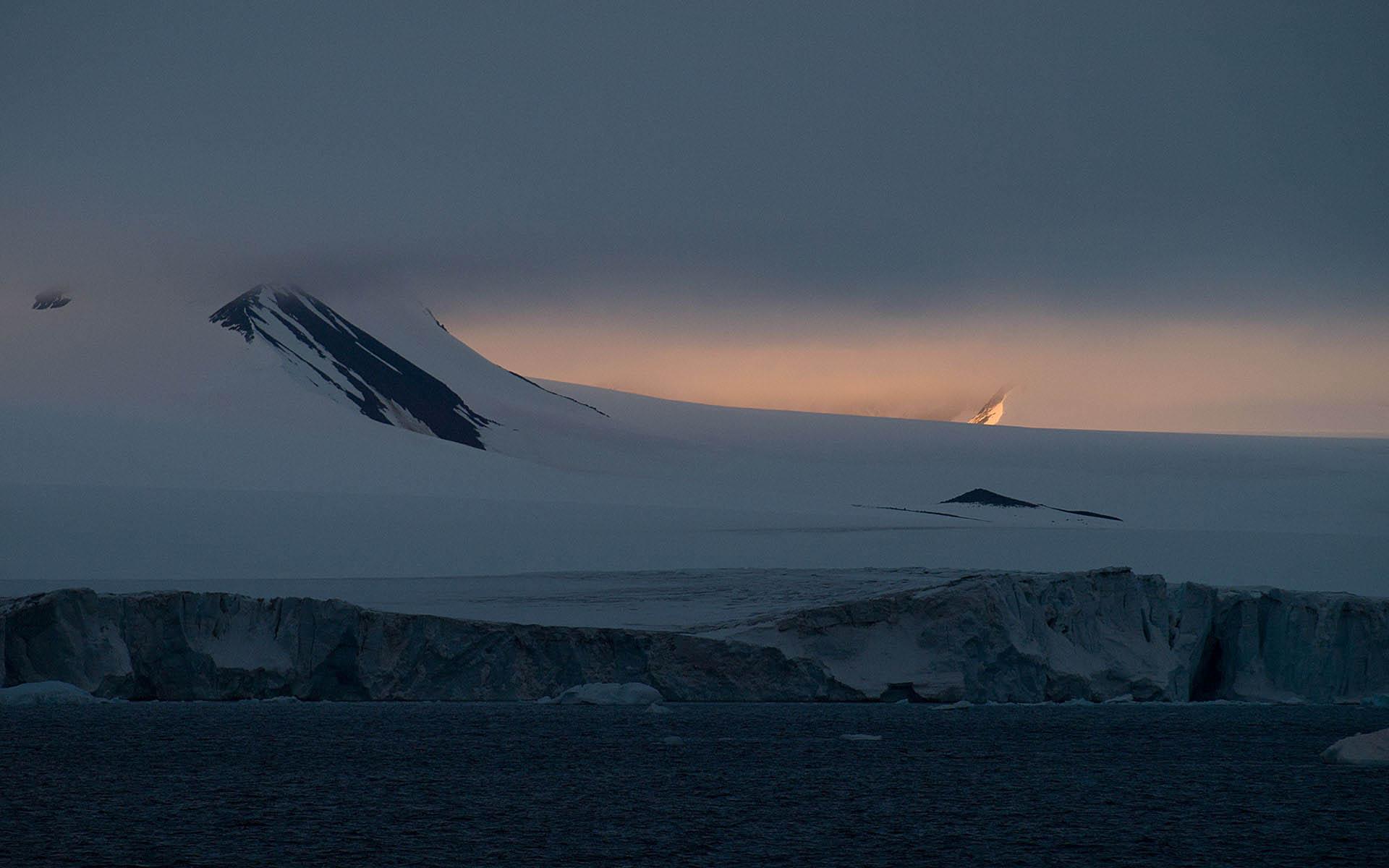
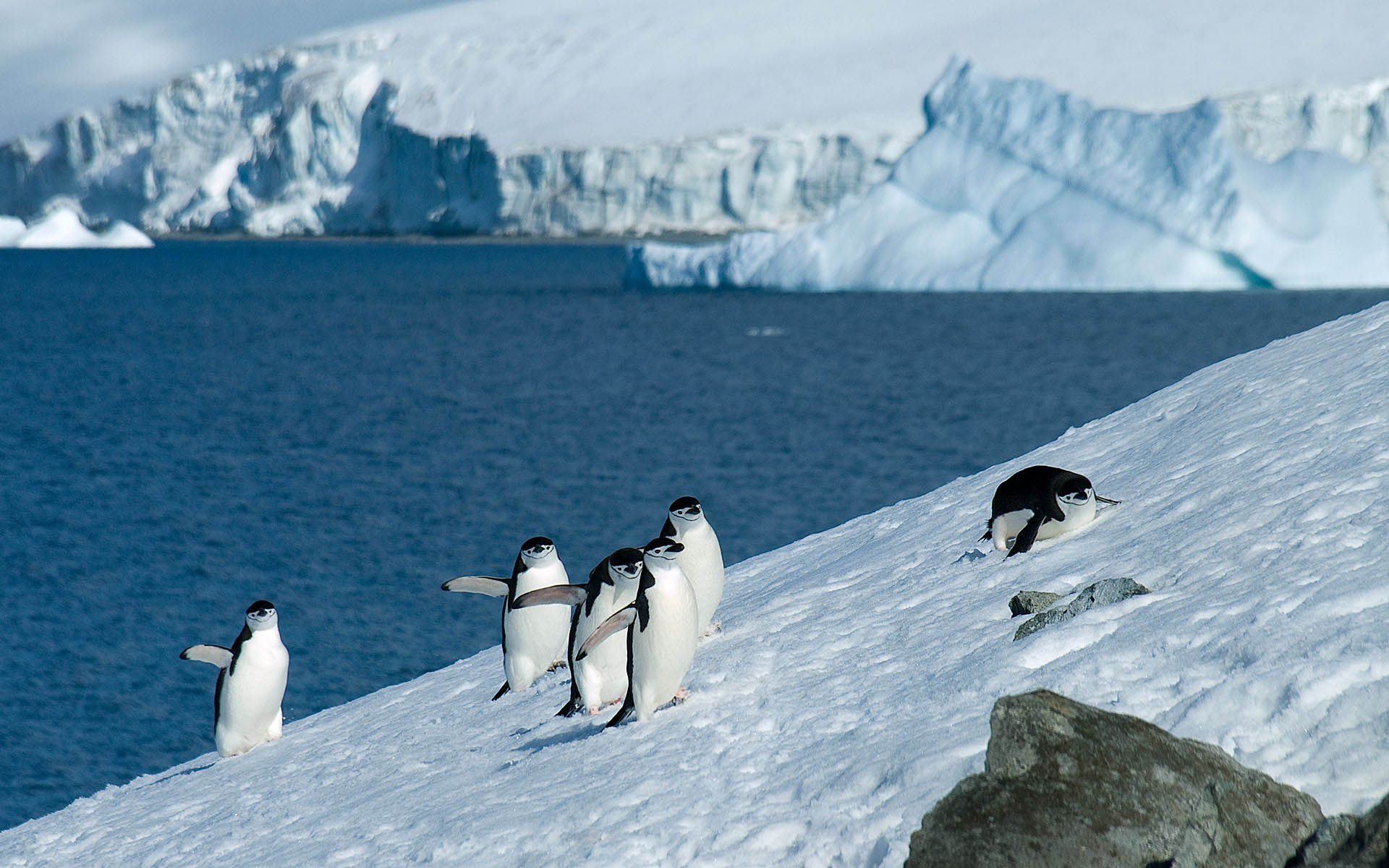
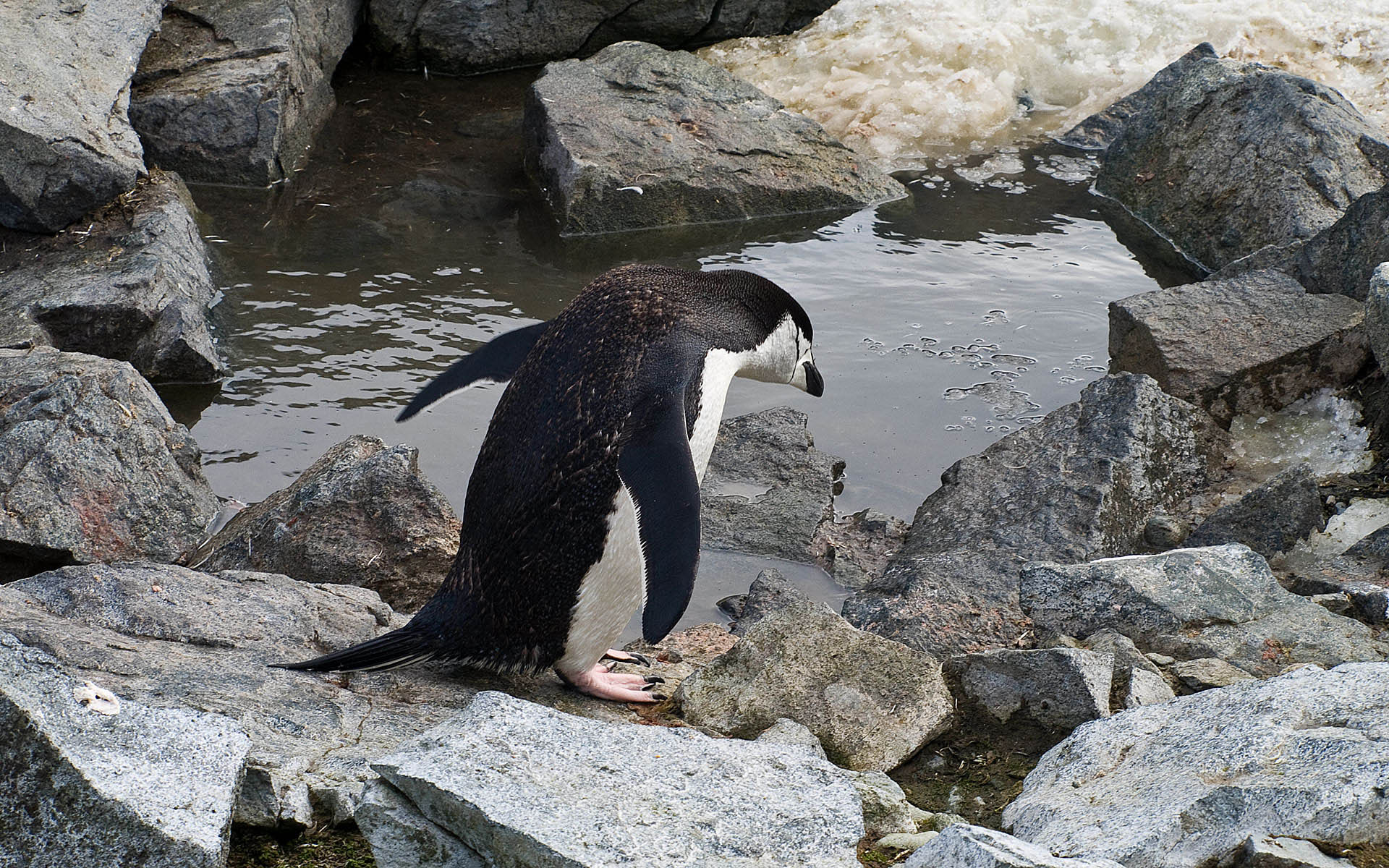
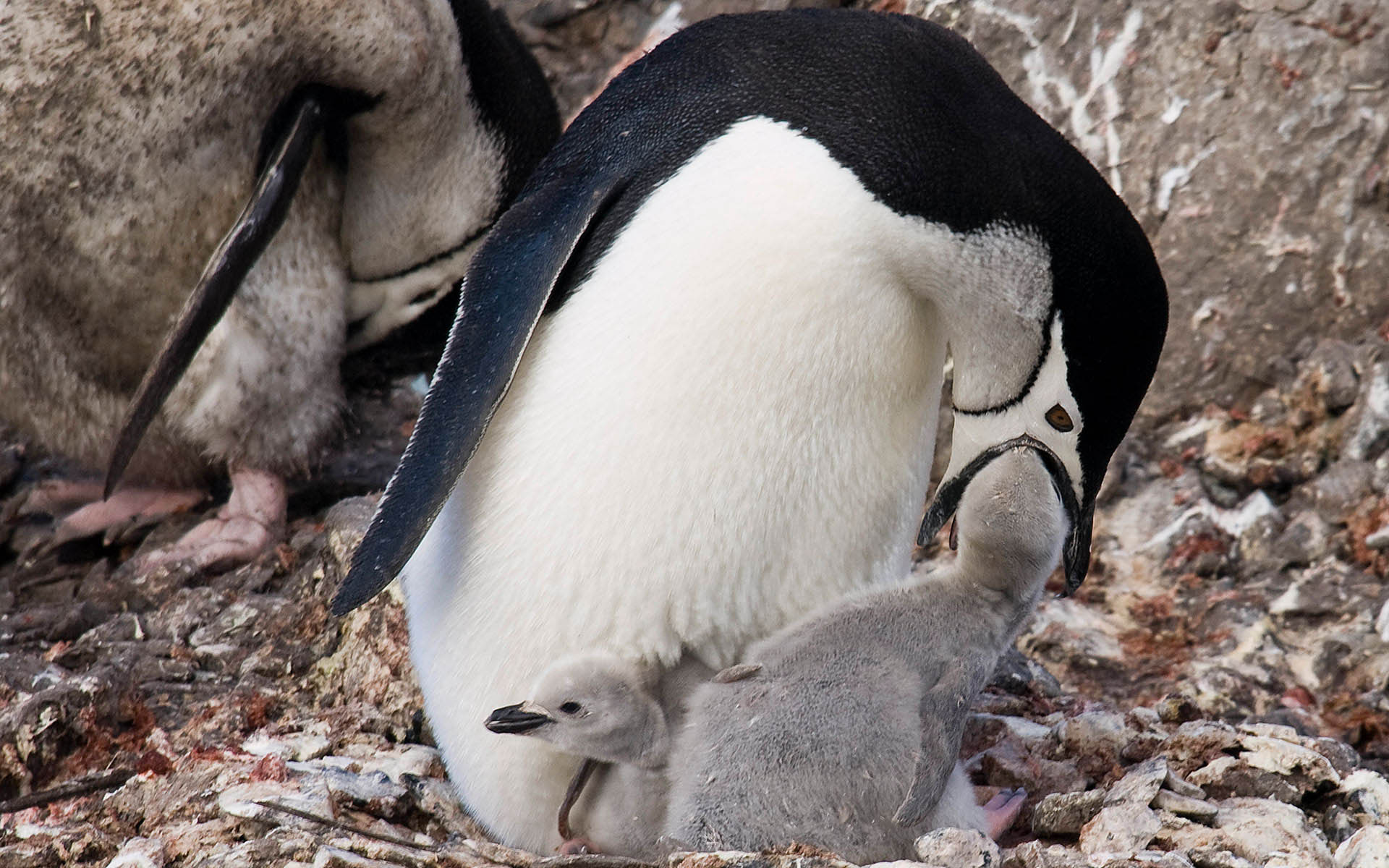
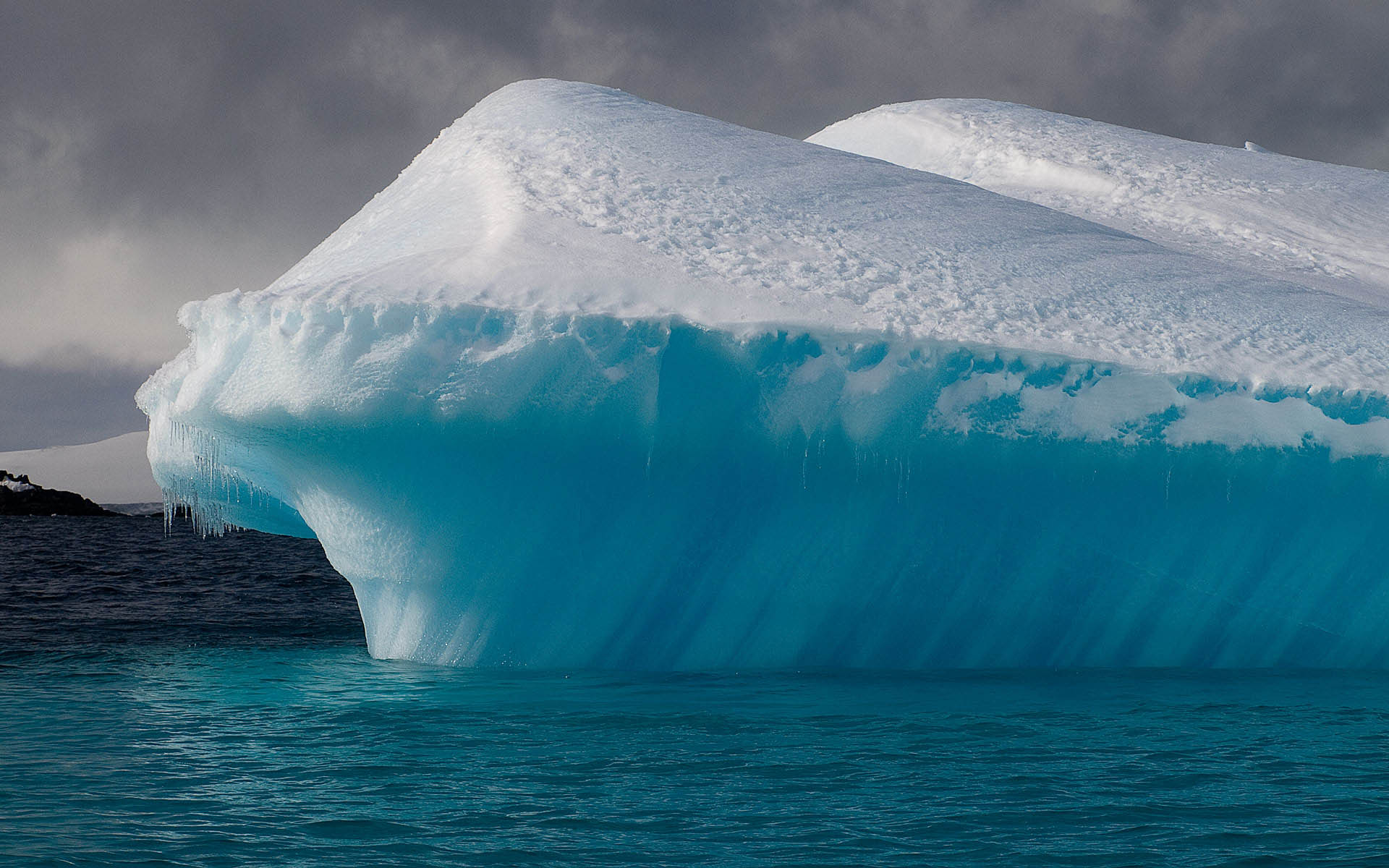
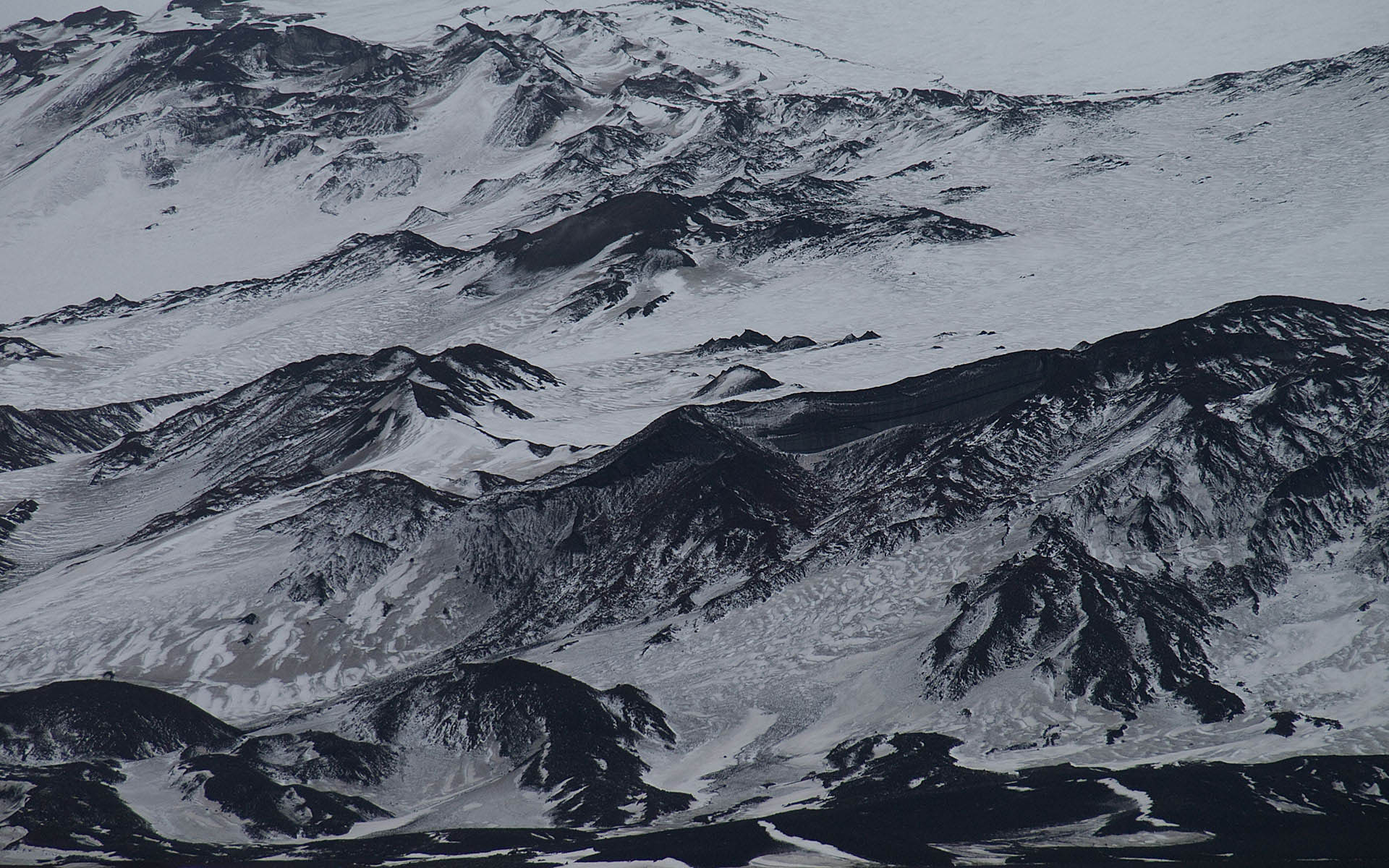
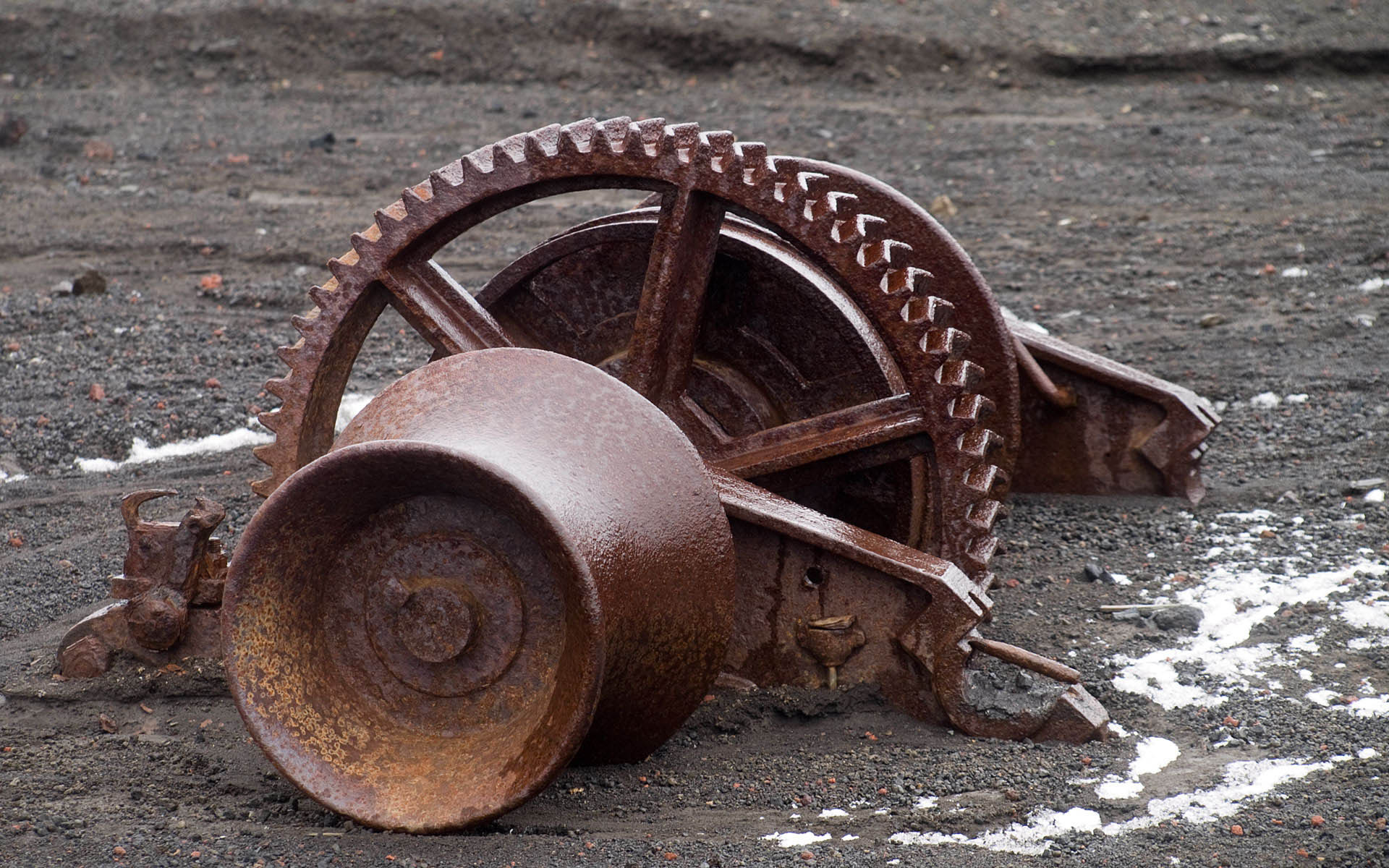
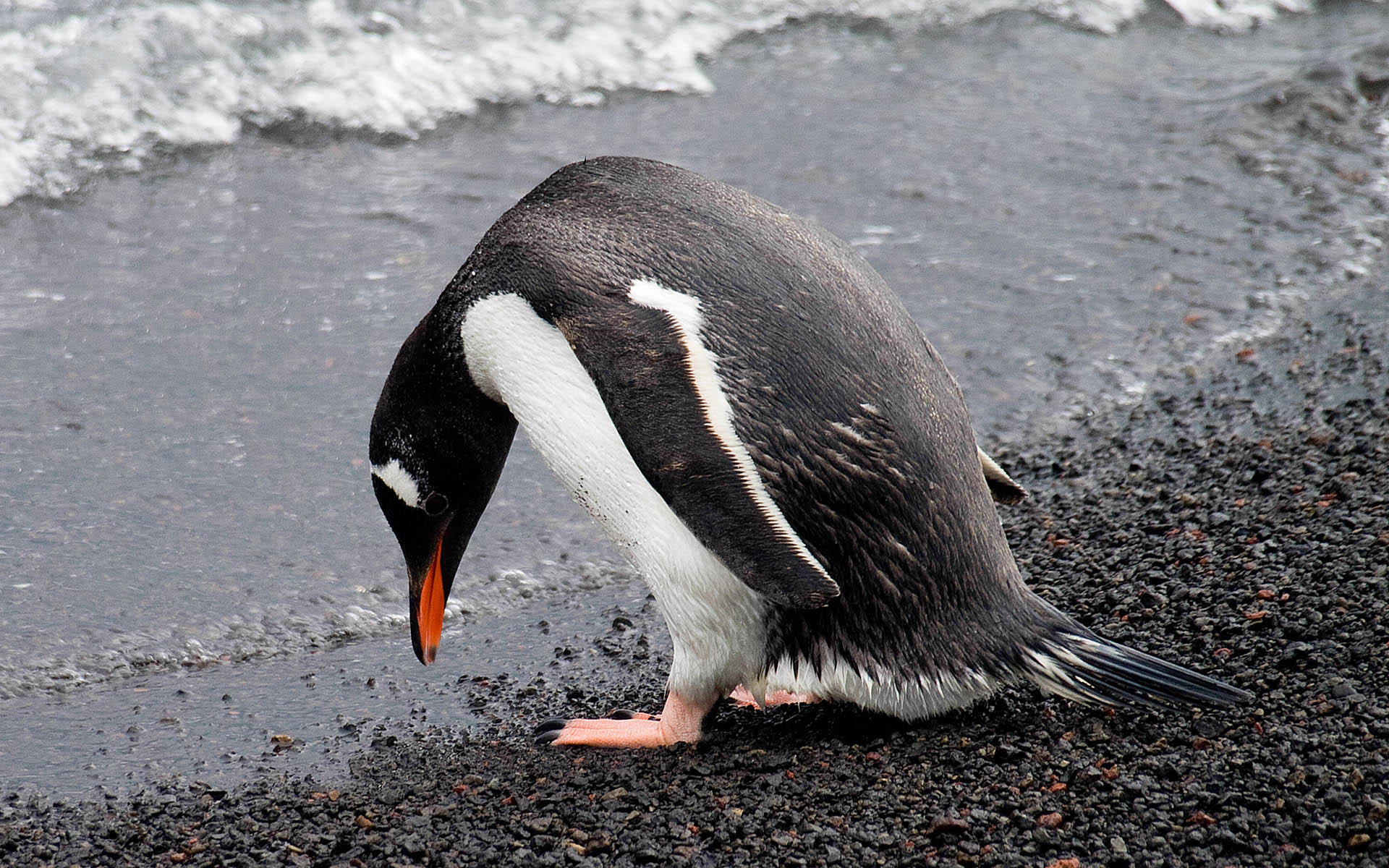
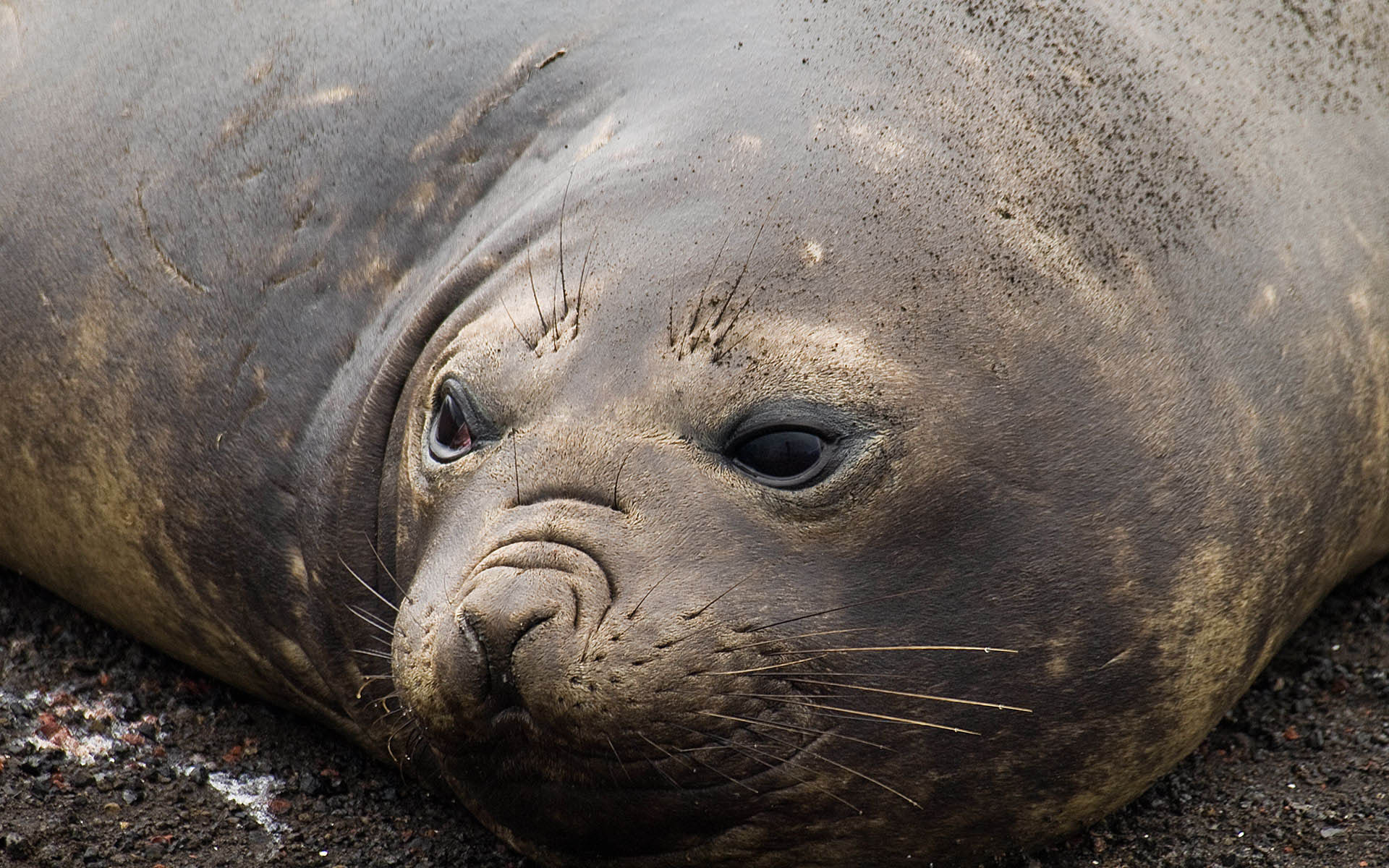
West Point Island (originally known as Albatross Island) is lying west of West Falkland. It has an area of 1,255 hectares and is run as a sheep farm. Wildlife on West Point includes rockhopper penguins, black-browed albatrosses and Commerson's dolphins.
Gentoo penguins on Saunders Island. Wildlife on the island also includes Rockhopper, Magellanic and king penguin, black-browed albatross and many other birds. There is also a small breeding area for Elephant Seals at Elephant Point.
Saunders Island is the fourth largest of the Falkland Islands and run as a sheep farm. Conservation issues include the danger of fire, some erosion prone areas near the coast, overgrazing and the presence of cats, mice, rats and some rabbits. Clearance of these introduced species is unlikely in the near future because of the size of the island and the varied geography.
Gentoo penguins breed on many sub-Antarctic islands. The total breeding population is estimated to be over 300,000 pairs. The Gentoo is easily recognized by the wide white stripe extending like a bonnet across the top of its head. Chicks have grey backs with white fronts.
The Chinstrap Penguin's name derives from the narrow black band under their heads which makes it appear as if they are wearing black helmets, making them one of the most easily identified types of penguin.
South Georgia is a British overseas territory in the southern Atlantic Ocean. It is a remote and inhospitable collection of islands, consisting of South Georgia and a chain of smaller islands, known as the South Sandwich Islands. There is no native population on the islands.
Around 95% of the Antarctic Fur Seal population breeds at the Island of South Georgia. Adult males are dark brown in colour. Females and juveniles tend to be grey with a lighter underside. The usual food supply is krill. Due to the enormous and growing populations of these seals, their food is a significant proportion of South Georgia's krill stocks.
Stromness is a former whaling station on the northern coast of South Georgia. Stromness has been subject to damage from the elements and many of its buildings have been reduced to ruins. Outside of Stromness is a small whalers' cemetery with 14 grave markers.
The King Penguin is the second largest species of penguin at about 11 to 16 kg. They breed on the subantarctic islands at the northern reaches of Antarctica, South Georgia, and other temperate islands of the region. The total population is estimated to be 2.23 million pairs and is increasing.
Elephant Seals were hunted to the brink of extinction by the end of the 19th century, but numbers have since recovered. They take their name from the large proboscis of the adult males which resembles an elephant's trunk.
Elephant seals spend upwards of 80% of their lives in the ocean. They can hold their breath for more than 100 minutes. Elephant seals dive to 1550 m beneath the ocean's surface. They are shielded from extreme cold by their blubber, more so than by fur. Their hair and outer layers of skin molt periodically.
Godthul is a bay 1.6 km long entered between Cape George and Long Point, on the north coast of South Georgia. The name Godthul (Norwegian for "Good Hollow") dates back to the period 1905–12, and was probably applied by Norwegian sealers and whalers working in the area.
Godthul - Elephant Seal.
Grytviken is the principal settlement in the British territory of South Georgia. It is the best harbour on the island, consisting of a bay within a bay. The site is quite sheltered, provides a substantial area of flat land suitable for building on, and has a good supply of fresh water.
Grytviken is associated with the explorer Ernest Shackleton. His most famous expedition set out from London for the Weddell Sea, where the pack ice closed in on their ship, the Endurance. The 28 crew members managed to flee, bringing 3 small boats with them. Shackleton reached the southern coast of South Georgia and organised a rescue operation to bring home the remaining men.
The settlement at Grytviken was established on November 16, 1904 as a whaling station. The whale population in the seas around the island was substantially reduced over the following sixty years until the station closed in December 1966. Even now, the shore around Grytviken is littered with whale bones and the rusting remains of whale oil processing plants and abandoned whaling ships.
Gold Harbour (54°37′S 35°56′W) is a small bay 8 km south-southwest of Cape Charlotte, with Bertrab Glacier at its head, along the east end of South Georgia. It is so called because the sun's rays make the cliffs yellow with their light in the morning and evening.
Gold Harbour - The area is a breeding ground for penguins including kings and gentoos, and elephant seals also breed here, especially at the west end of the beach, where a glacial stream flows.
King penguins have adapted well to their extreme living conditions in the subantarctic. To keep warm, the penguins have four layers of feathering. The outer layer of feathers are oiled and waterproof, which reduces to the amount of water absorbed that would otherwise increase their weight. The inner three layers are down feathers, very effective insulation.
A King penguin chick is born without the oily outer layer, and therefore cannot fish until maturity. A King Penguin chick has dark down feathers. They remain on land and do not go into the water until their down feathers have fallen off.
The Antarctic Sound is a body of water about 50 km long and from 11 to 19 km wide, separating the Joinville Island group from the northeast end of the Antarctic Peninsula. Large tabular icebergs that break off from the massive ice shelves migrate their way through the Sound, to the western side of Antarctica.
The two basic types of iceberg forms are tabular and non-tabular. Tabular icebergs have steep sides and a flat top, with a length-to-height ratio of more than 5:1. Antarctic icebergs formed by breaking off from an ice shelf, such as the Ross Ice Shelf or Filchner-Ronne Ice Shelf, are typically tabular. The largest icebergs in the world are formed this way.
Non-tabular icebergs have different shapes. Dome: An iceberg with a rounded top. Pinnacle: An iceberg with one or more spires. Wedge: An iceberg with a steep edge on one side and a slope on the opposite side. Dry-Dock: An iceberg that has eroded to form a slot or channel. Blocky: An iceberg with steep, vertical sides and a flat top.
Because the density of pure ice is about 920 kg/m³, and that of sea water about 1025 kg/m³, typically only one-ninth of the volume of an iceberg is above water. The shape of the underwater portion can be difficult to judge by looking at the portion above the surface.
Icebergs generally range from 1 to 75 metres above sea level and weigh 100,000 to 200,000 metric tons. Though usually confined by winds and currents to move close to the coast, the largest icebergs recorded have been calved, or broken off, from the Ross Ice Shelf of Antarctica.
When an iceberg melts, it makes a fizzing sound called "Bergie Seltzer". This sound is made when compressed air bubbles trapped in the iceberg pop. The bubbles come from air trapped in snow layers that later became glacial ice.
Brown Bluff is a flat-topped, steep-sided volcano located at the northern tip of the Antarctic Peninsula. It formed in the past 1 million years. The volcano's original diameter is thought to have been about 12-15 kilometers, and probably formed by a single vent.
The Adélie Penguin is a species of penguin common along the entire Antarctic coast. They are among the most southerly distributed of all seabirds. Like all penguins, the Adélie is highly social, foraging and nesting in groups. They are also very aggressive to other penguins that steal stones from their nest.
"At the place where they most often went in the water, a long terrace of ice about six feet in height ran for some hundreds of yards along the edge of the water, and here, just as on the sea-ice, crowds would stand near the brink. When they had succeeded in pushing one of their number over, all would crane their necks over the edge, and when they saw the pioneer safe in the water, the rest followed.”
Henryk Arctowski Polish Antarctic Station is a research station on King George Island. The station was established in 1977. It is managed by the Polish Academy of Sciences, and its main research areas include marine biology, oceanography, geology, geomorphology, glaciology, meteorology, climatology, seismology, magnetism and ecology.
Half Moon Island is has a sizable rookery of chinstrap penguins as well as nesting Antarctic terns and kelp gulls. Whales are often seen patrolling the shores, and this small island offers stunning views of surrounding mountains. The Argentine station Cámara Base is located on the island.
Chinstrap Penguins grow to 68 cm in length, and a weight of 6 kg. Males are both larger and heavier than females. Their diet consists of krill, shrimp and fish, for which they swim up to 80 km offshore each day. They live on barren islands and large icebergs of the sub-Antarctic Region and the Antarctic Peninsula; however, they generally require solid, snow-free ground to nest on.
The Chinstrap Penguin's primary predator is the leopard seal. There are 12 - 13 million chinstrap penguins. They have an average life span of 15-20 years. Chinstrap Penguins are considered the most aggressive penguin.
On land (and occasionally on icebergs) Chinstrap penguins build circular nests from stones, and lay two eggs, which are incubated by both the male and the female for shifts of 6 days. The chicks hatch after about 37 days, and have fluffy gray backs and white fronts. They stay in the nest for ±25 days before they go to join a creche. At around ±55 days old, they moult, gaining their adult feathers and go to sea.
The South Shetland Islands are lying about 120 kilometres north of the Antarctic Peninsula, with a total area of 3,687 km². There are 16 research stations to date in different parts of the islands, mostly Chilean. The islands have experienced measurable glacier retreat during recent years but despite this they remain more than 80% snow and ice covered throughout the summer.
Deception Island has one of the safest harbours in Antarctica. The island is the caldera of an active volcano and is now a tourist destination and scientific outpost, with research bases being run by Argentina and Spain. Various countries have previously asserted sovereignty, but it is now administered under the Antarctic Treaty System.
Since the early 19th century, Deception Island was a favourite refuge area from the storms and icebergs of Antarctica. In 1906, a Norwegian-Chilean whaling company started using Whalers Bay as a base. Other whaling operations followed suit, and by 1914 there were 13 factory ships based there. However, whale oil prices dropped, making the station economically unprofitable, thus it was abandoned in 1931.
Gentoos live mainly on crustaceans such as krill. However, they are opportunistic feeders, and around the Falklands are known to take roughly equal proportions of fish, crustaceans and squid. In the water, sea lions, leopard seals, and orca are all predators of the Gentoo. On land there are no predators of full grown Gentoos. Skua can steal their eggs; however, some other seabirds have managed to snatch chicks.
Deception Island's unique landscape comprises barren volcanic slopes, steaming beaches and ash-layered glaciers. It has a distinctive horse-shoe shape with a large flooded caldera. This opens to the sea through a narrow channel at Neptunes Bellows, forming a natural sheltered harbour. It is one of the only places in the world where vessels can sail directly into the centre of a restless volcano.
